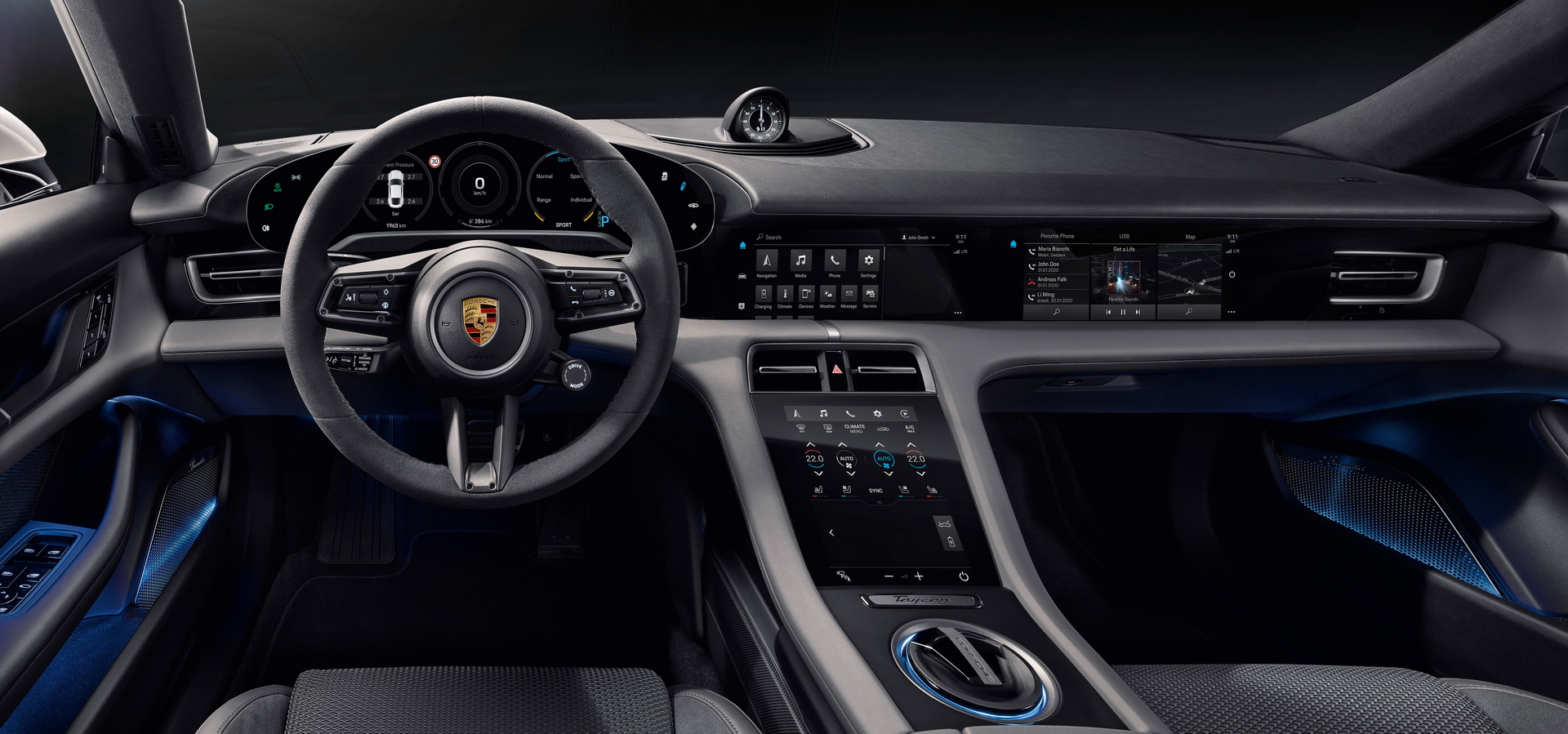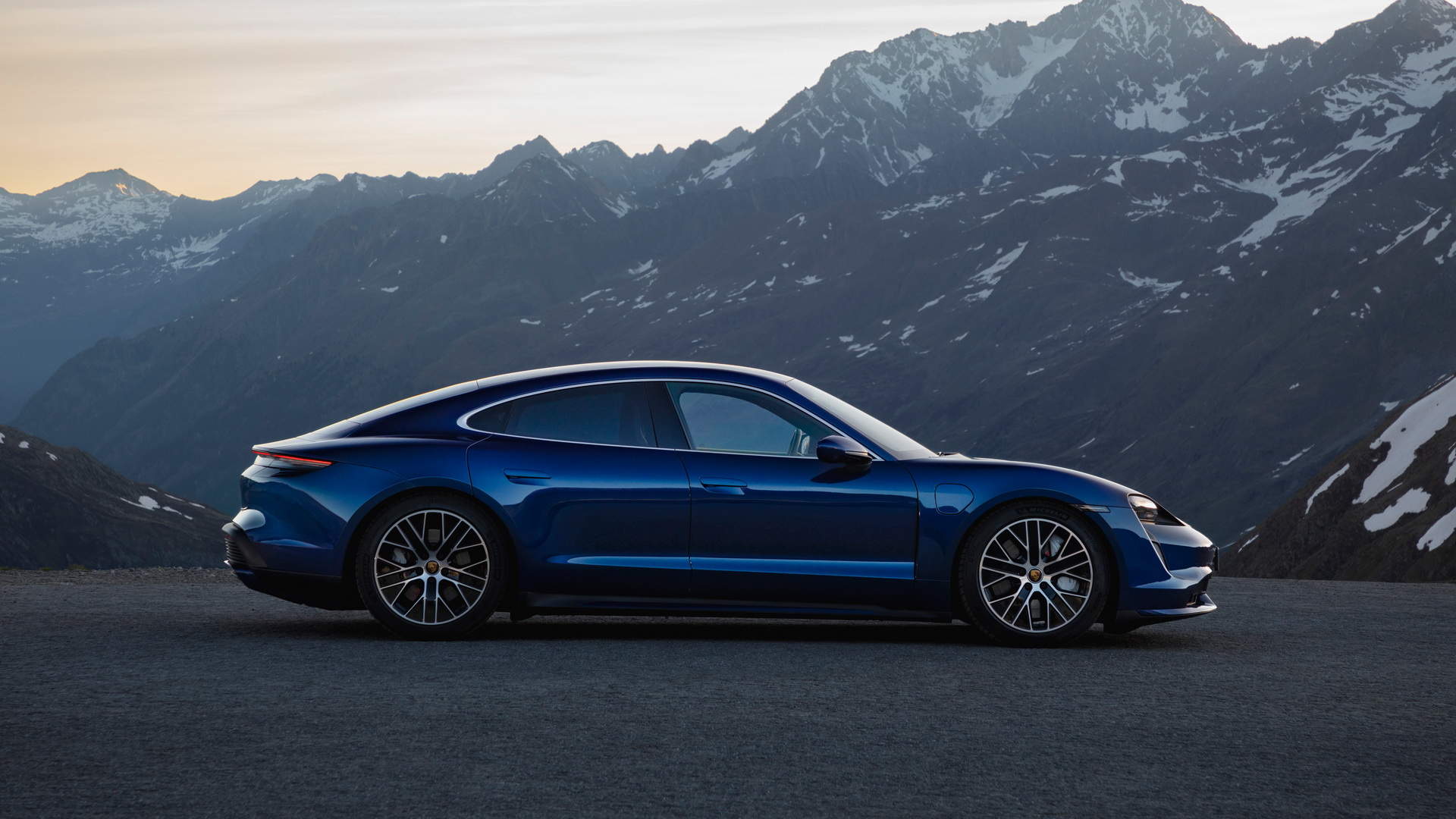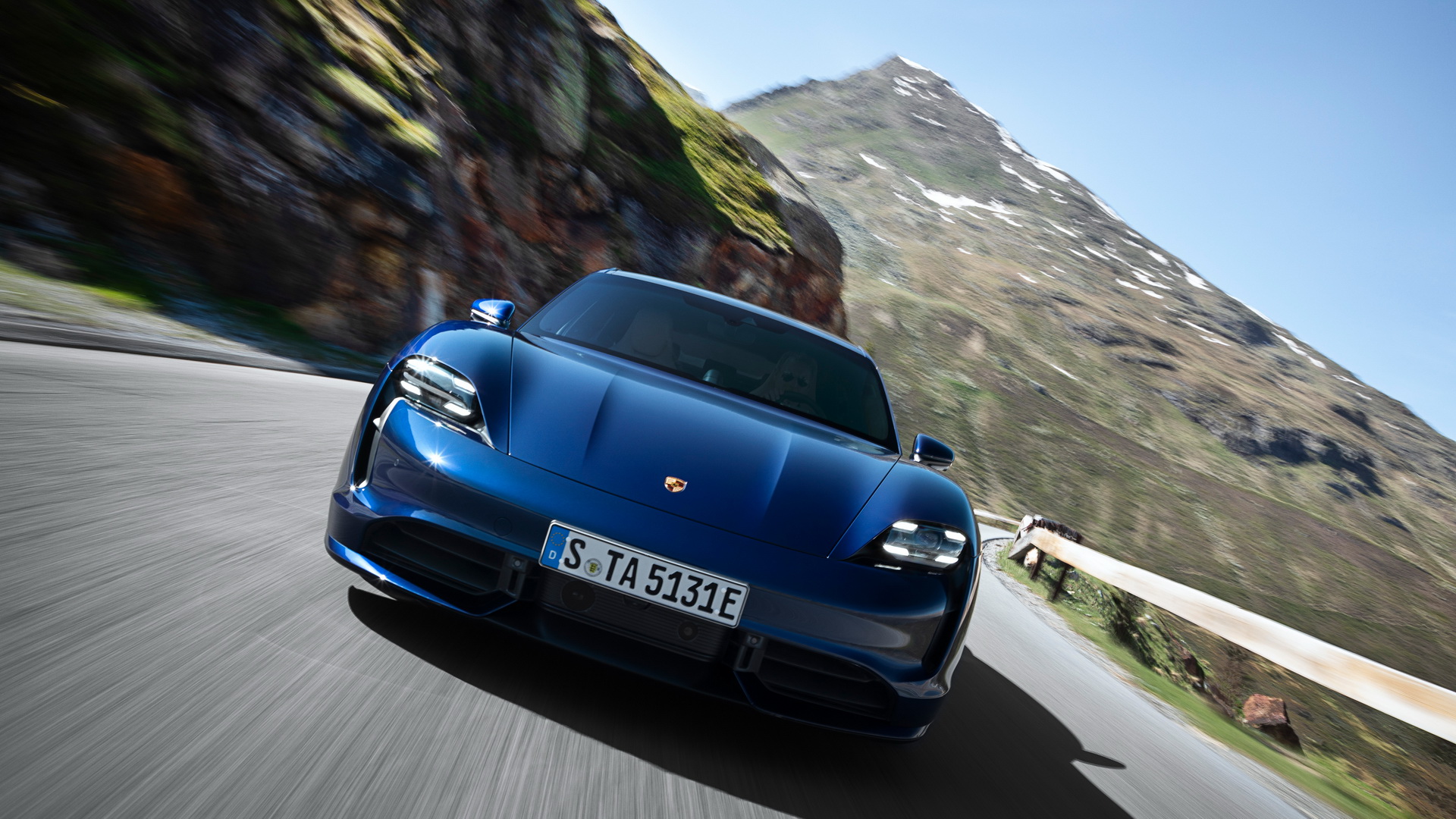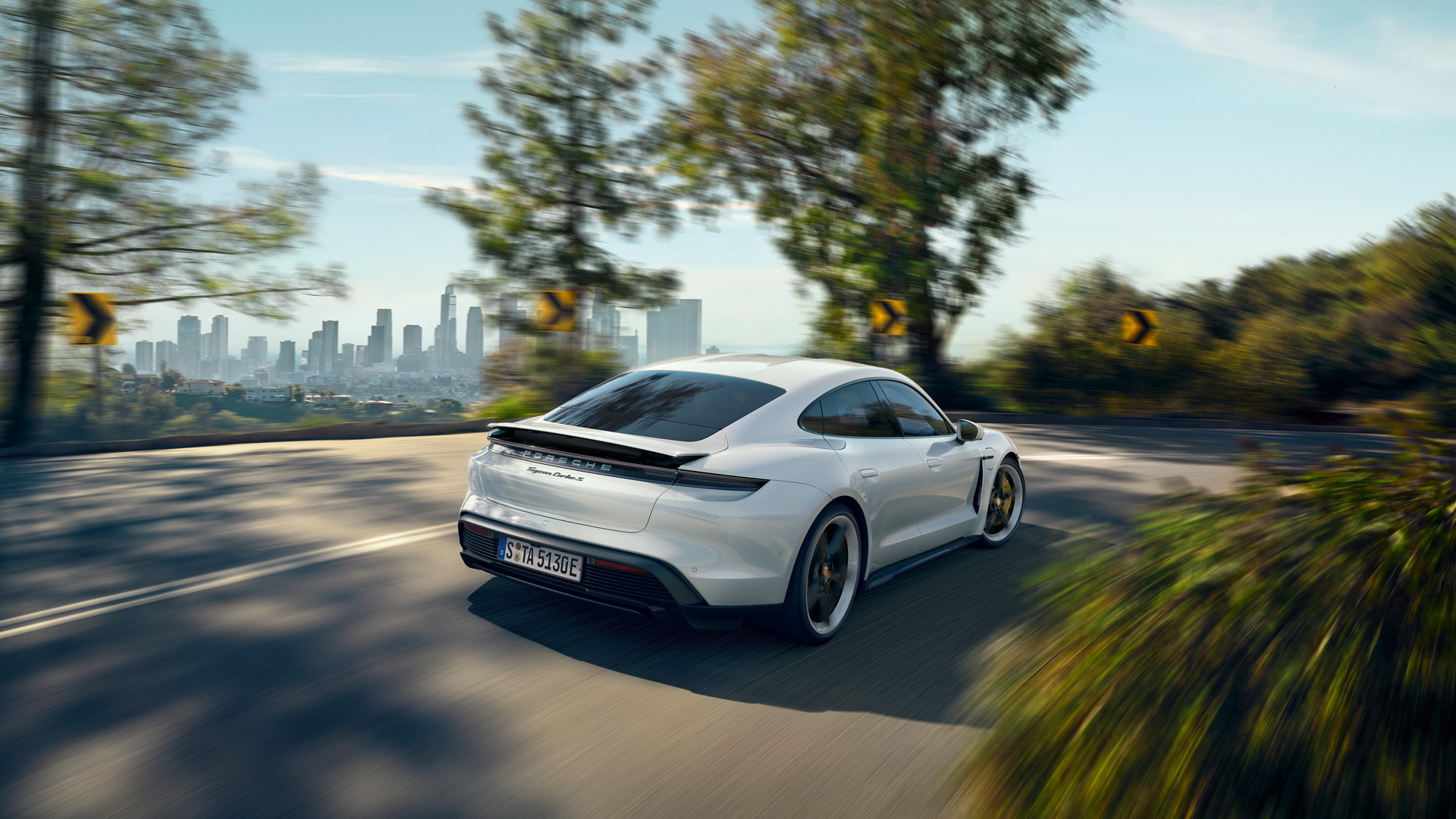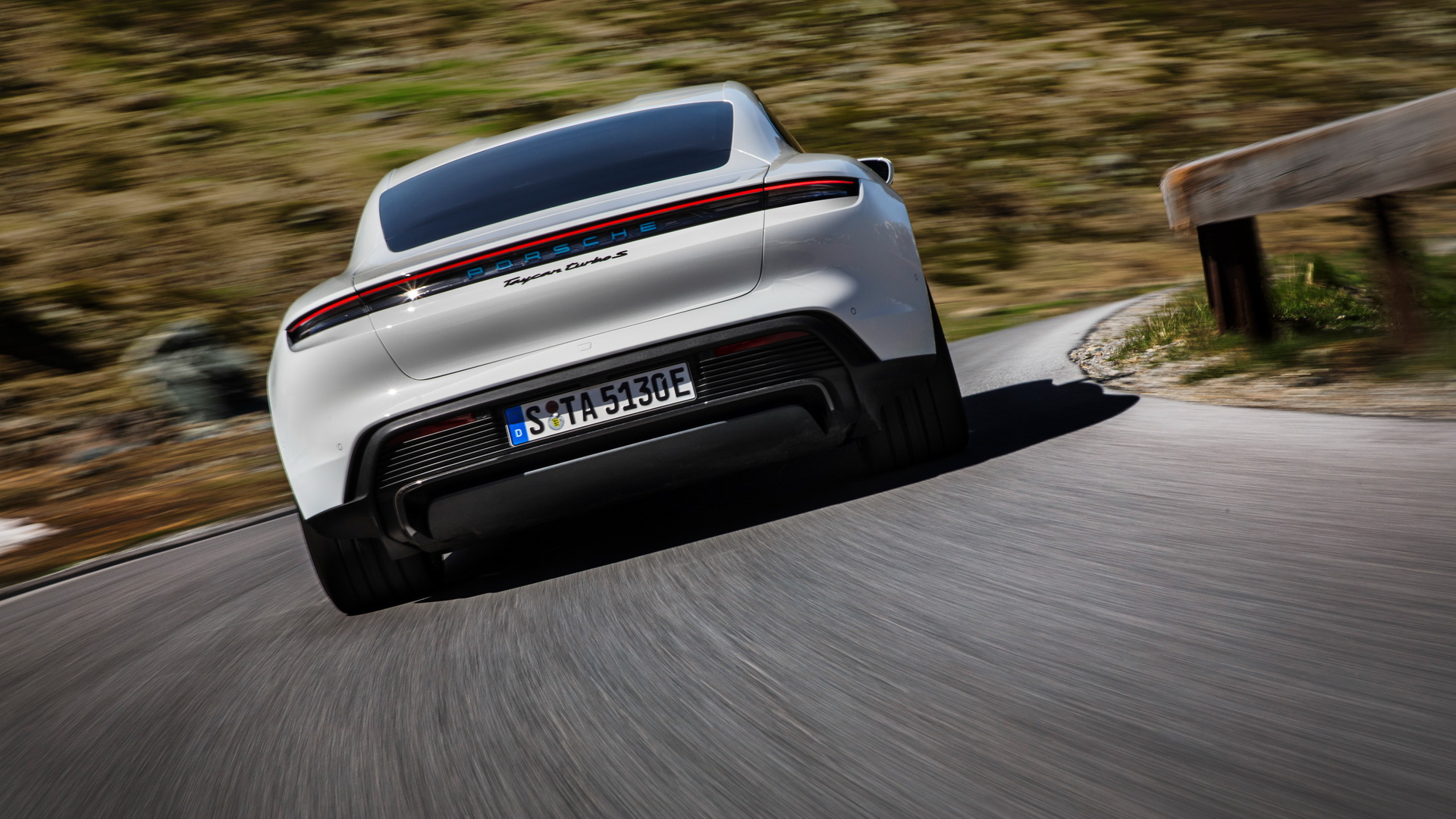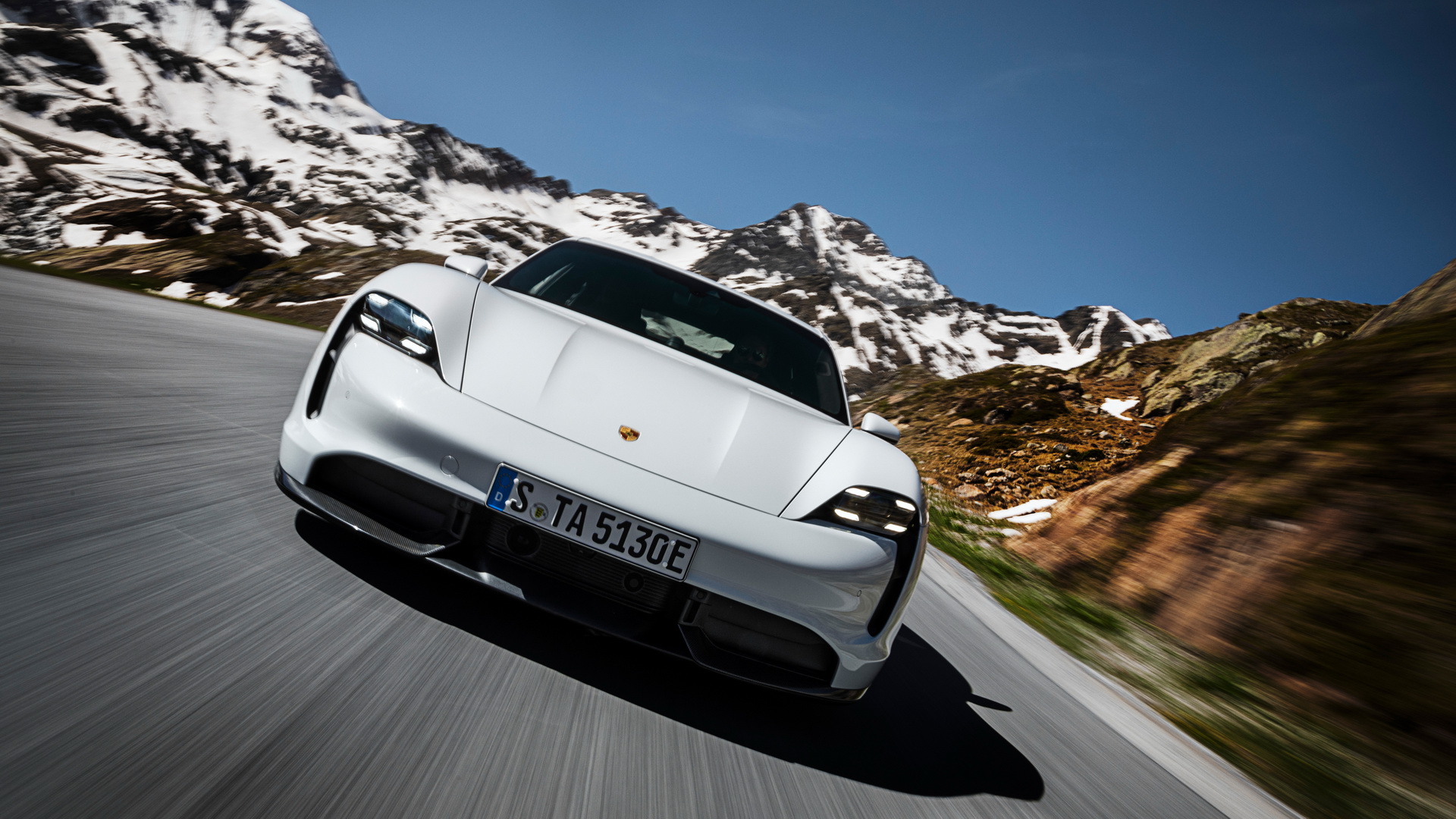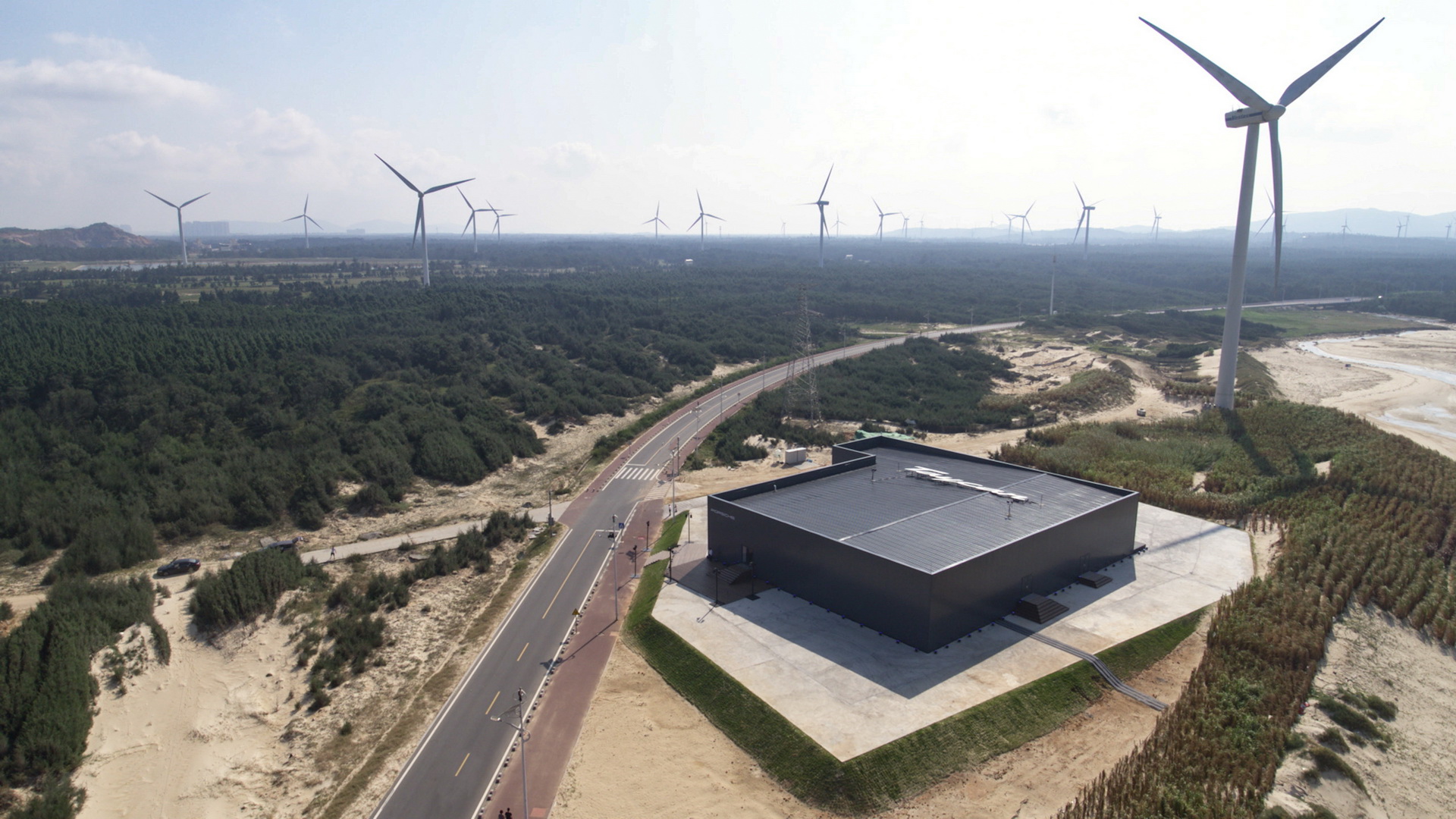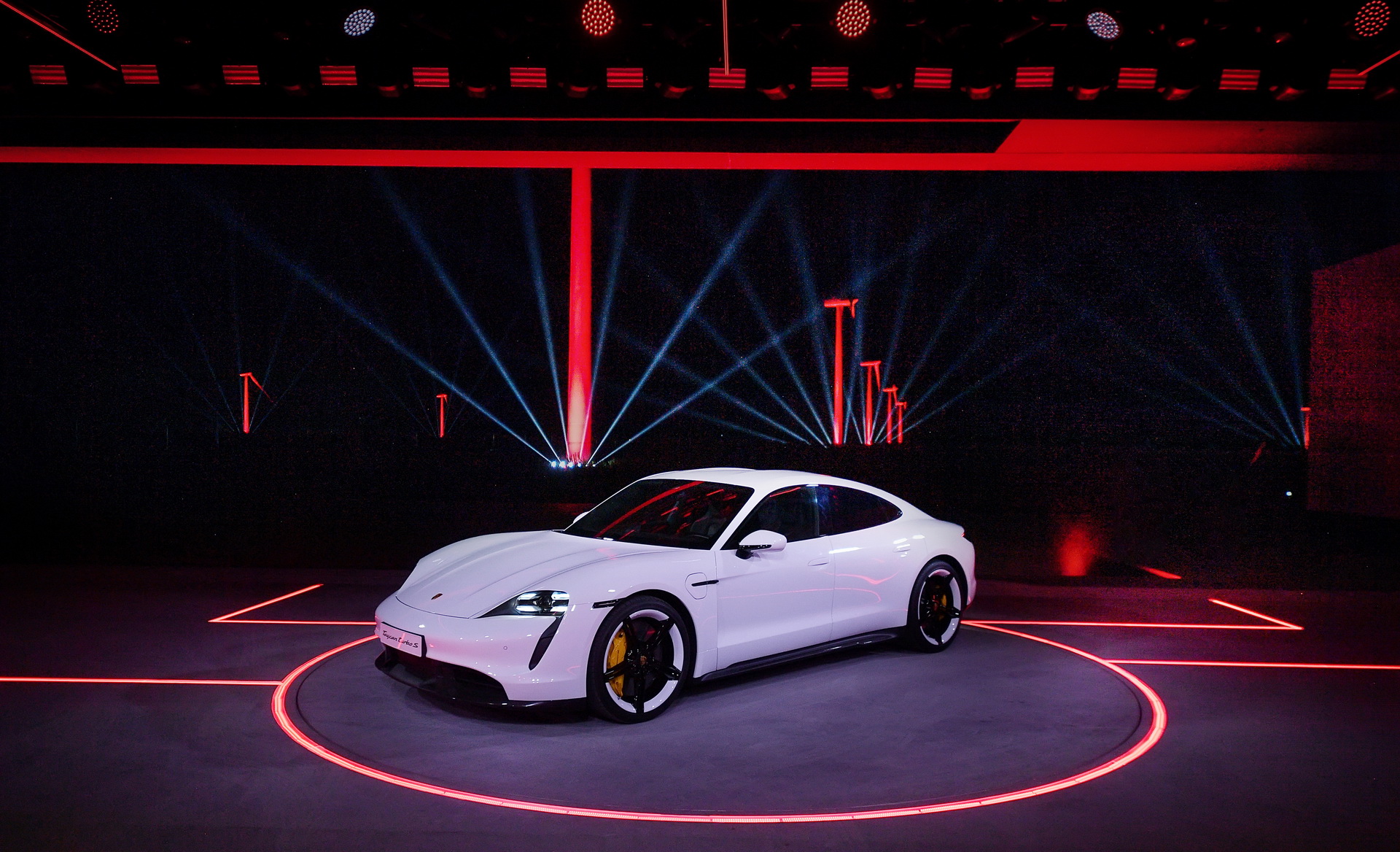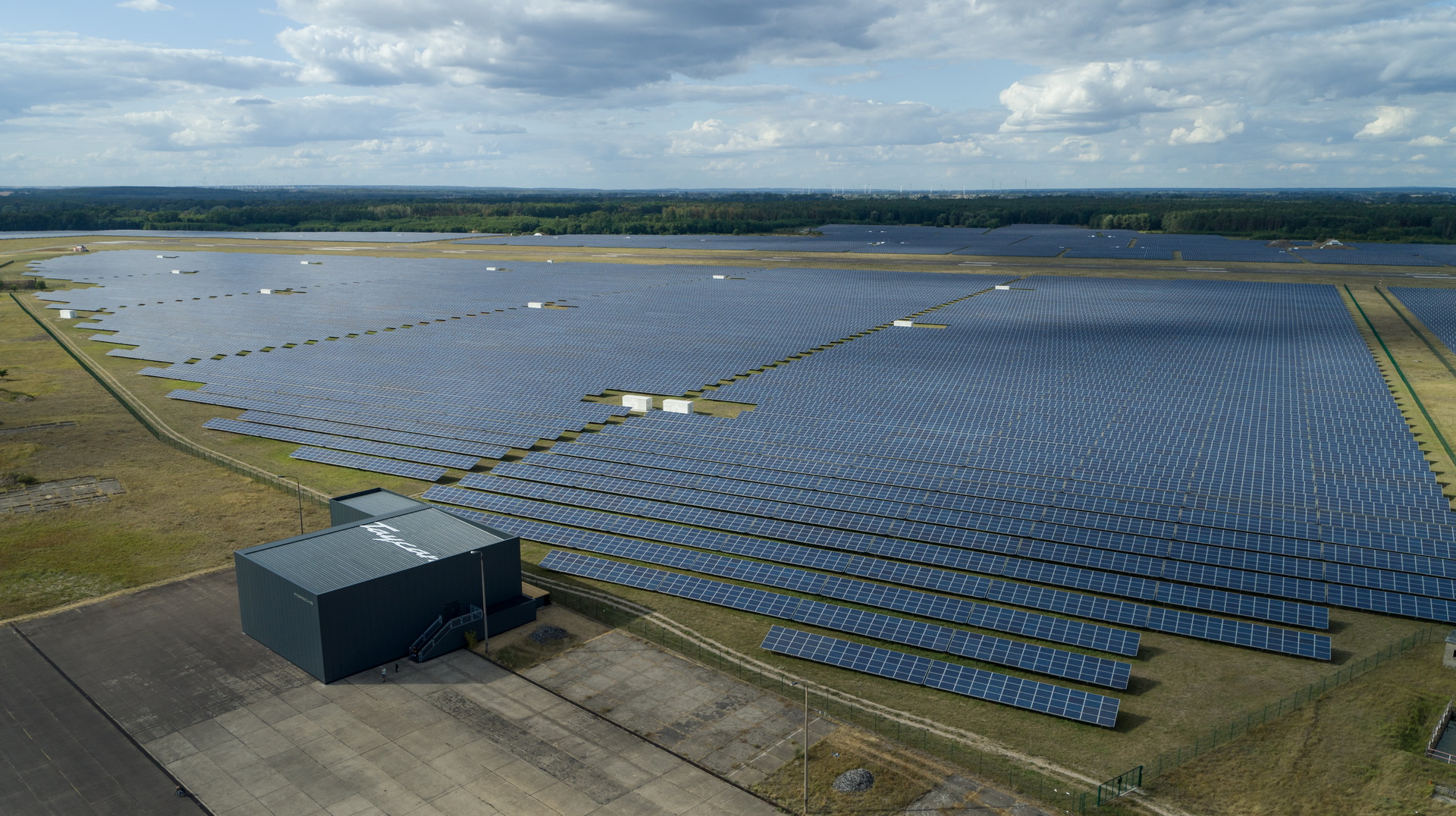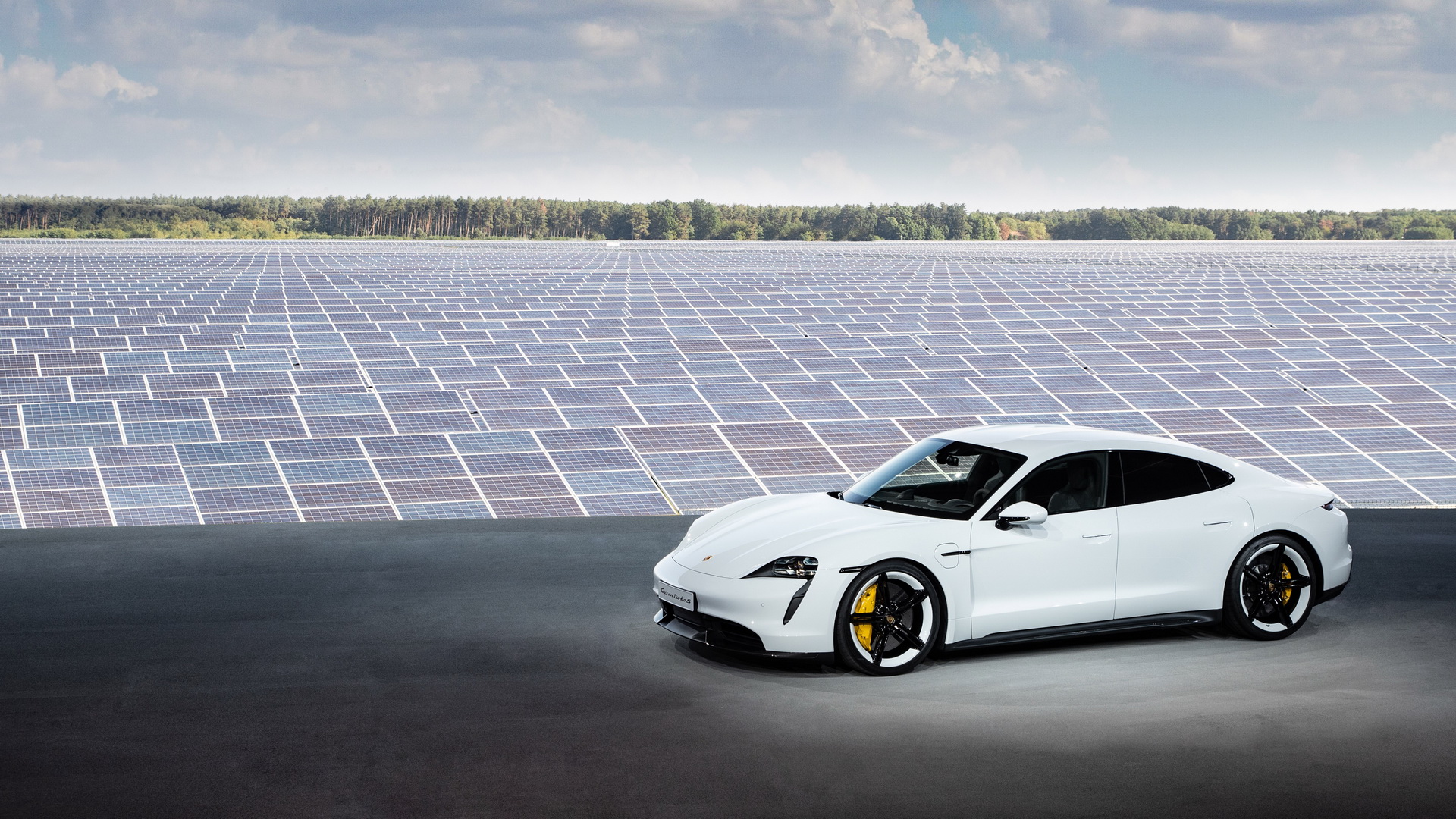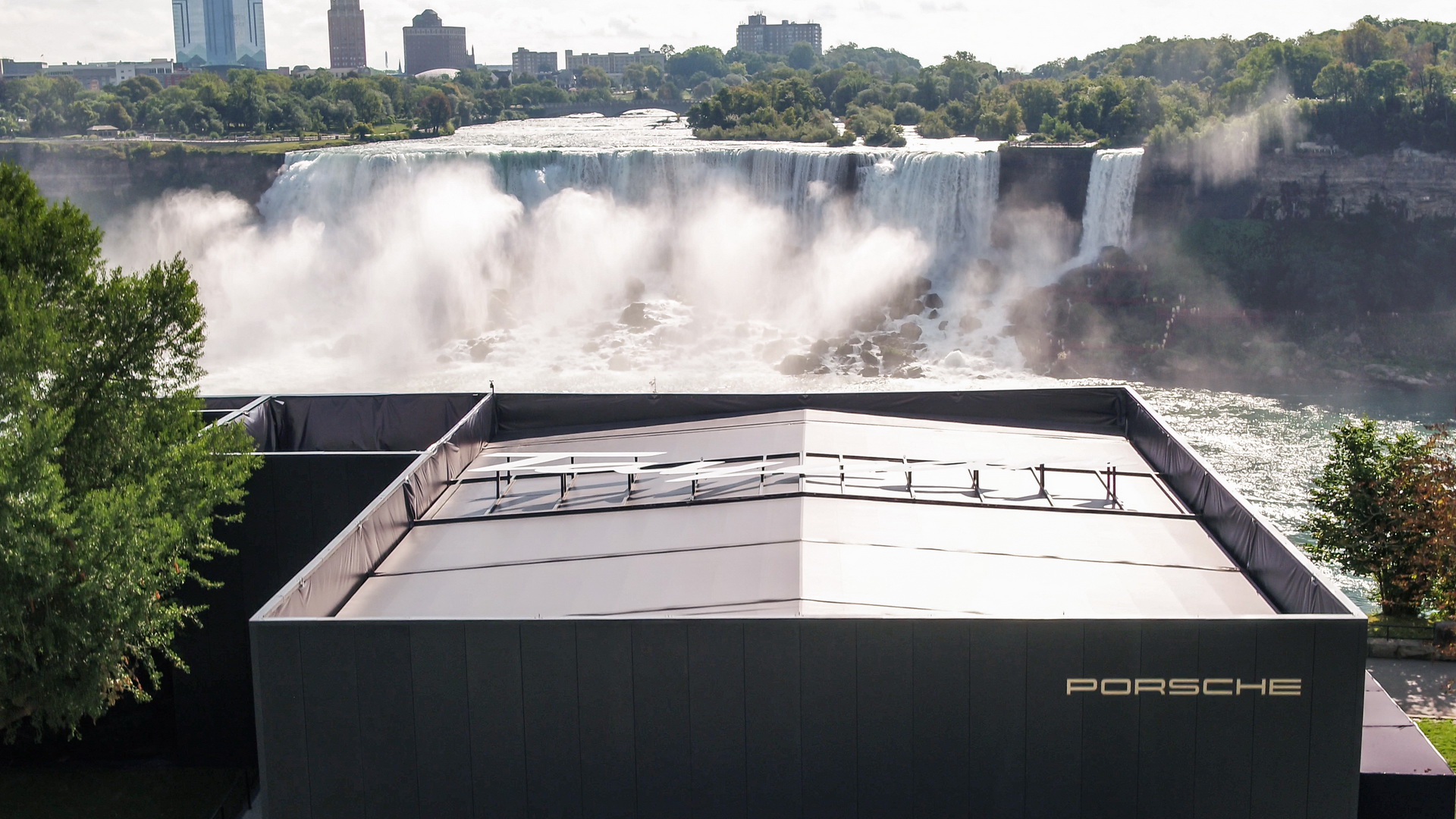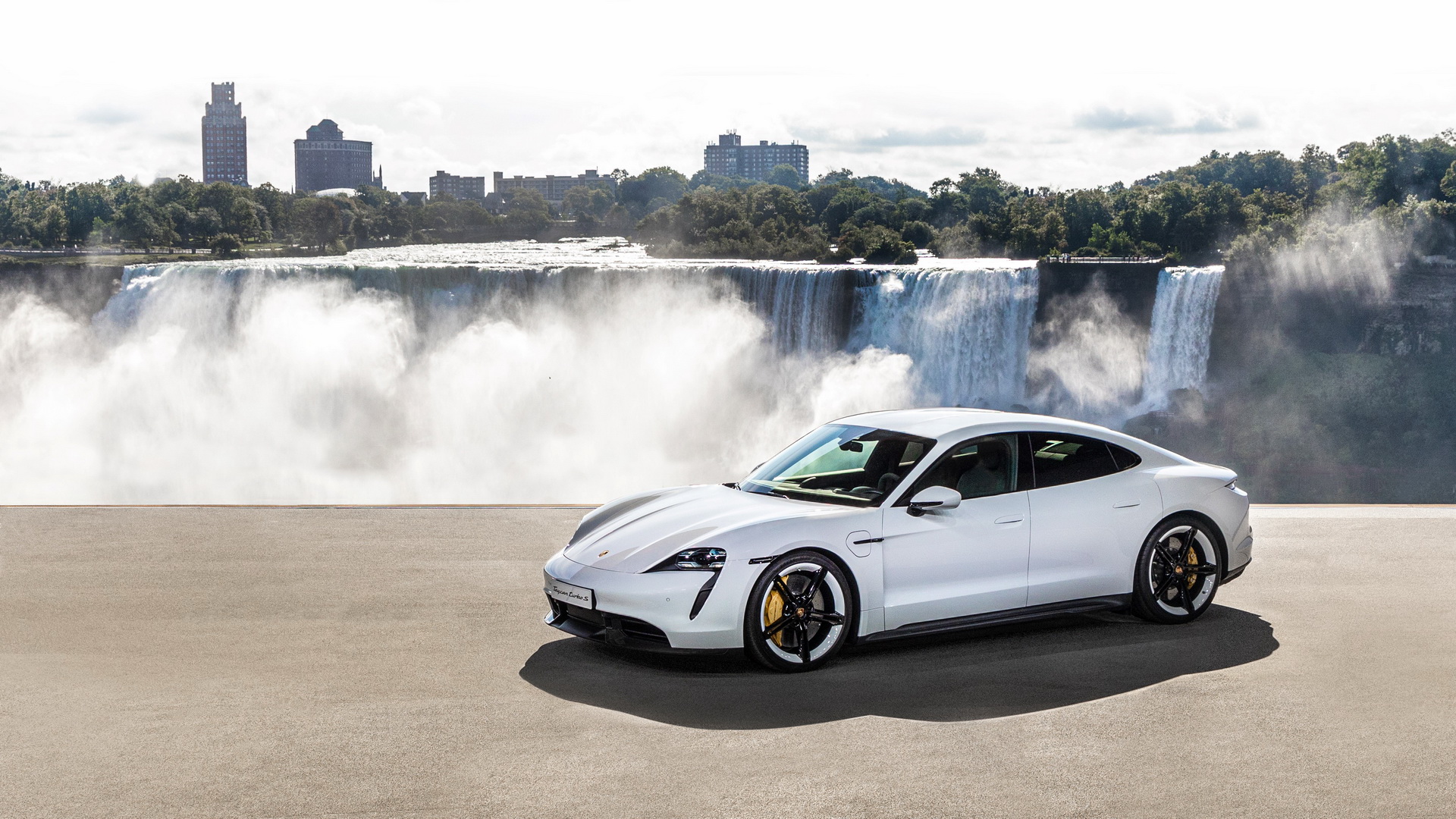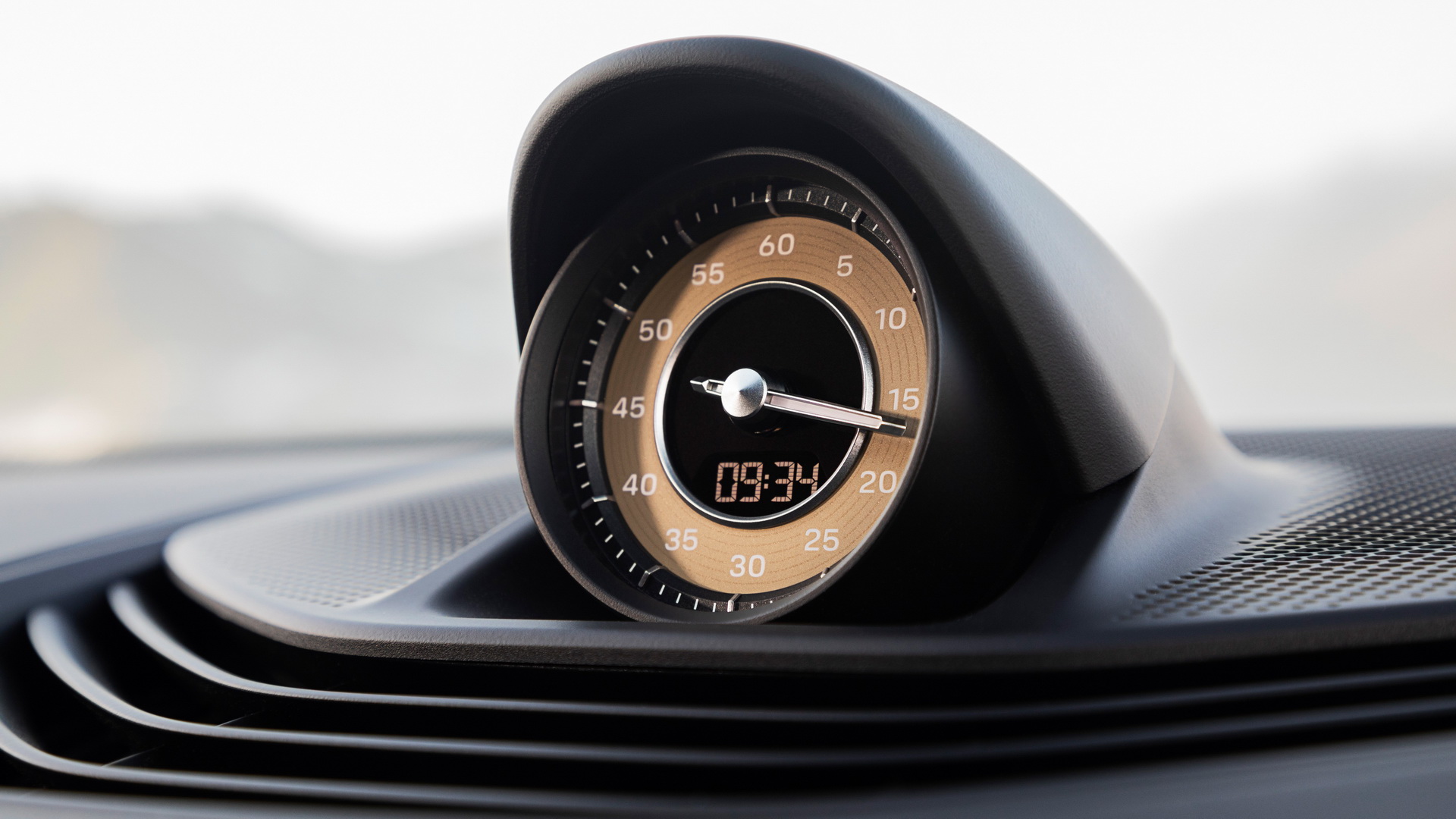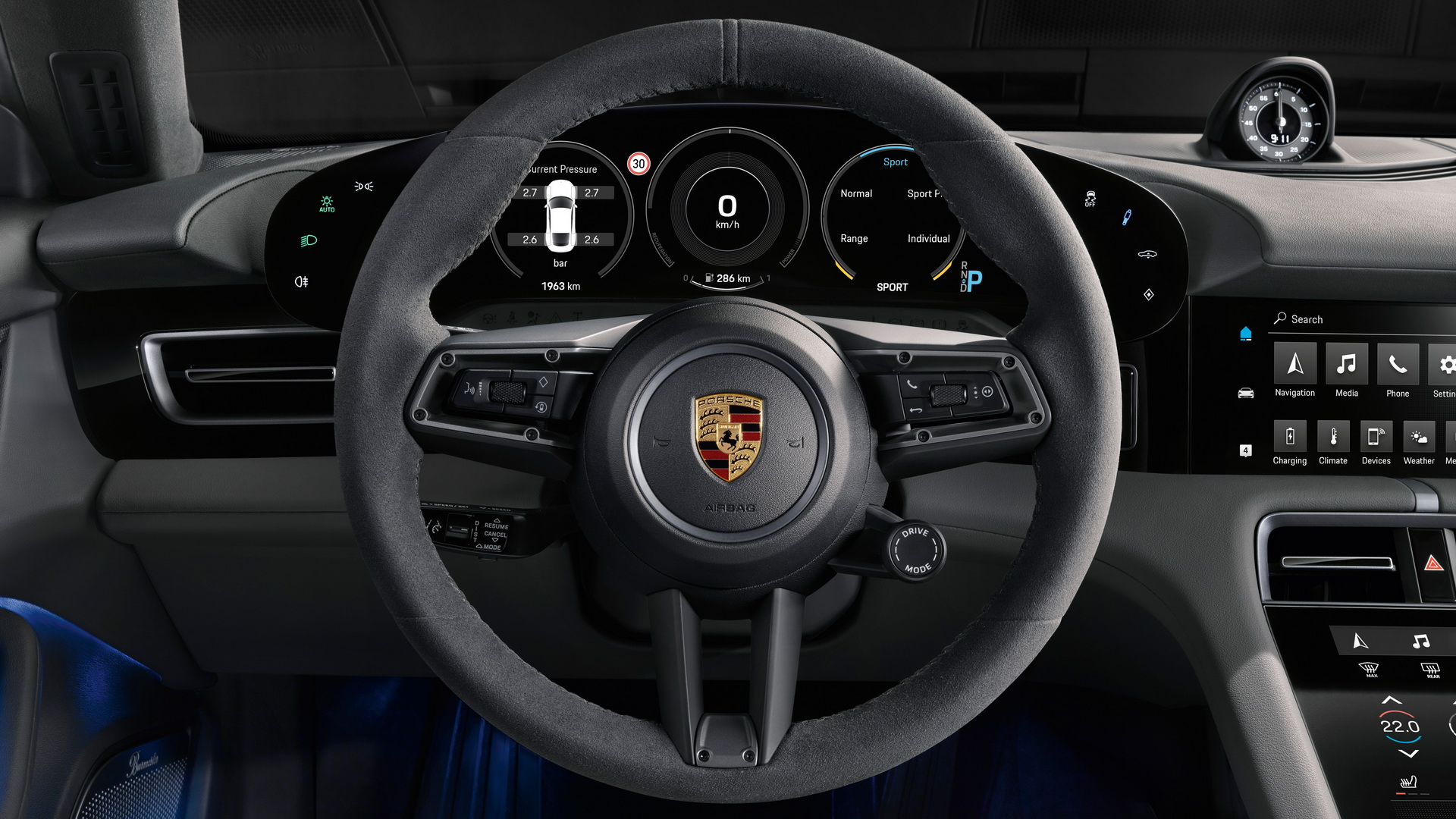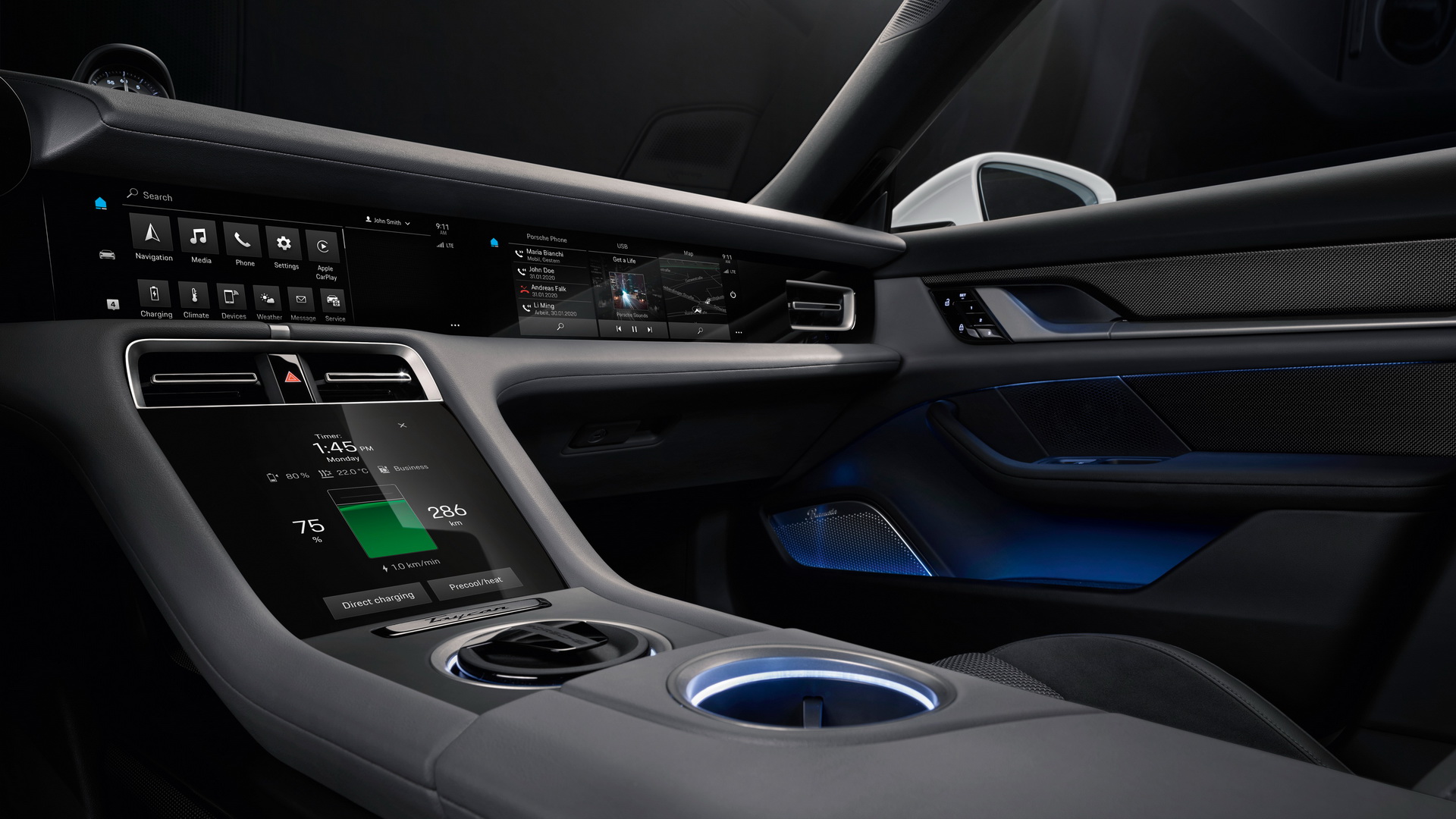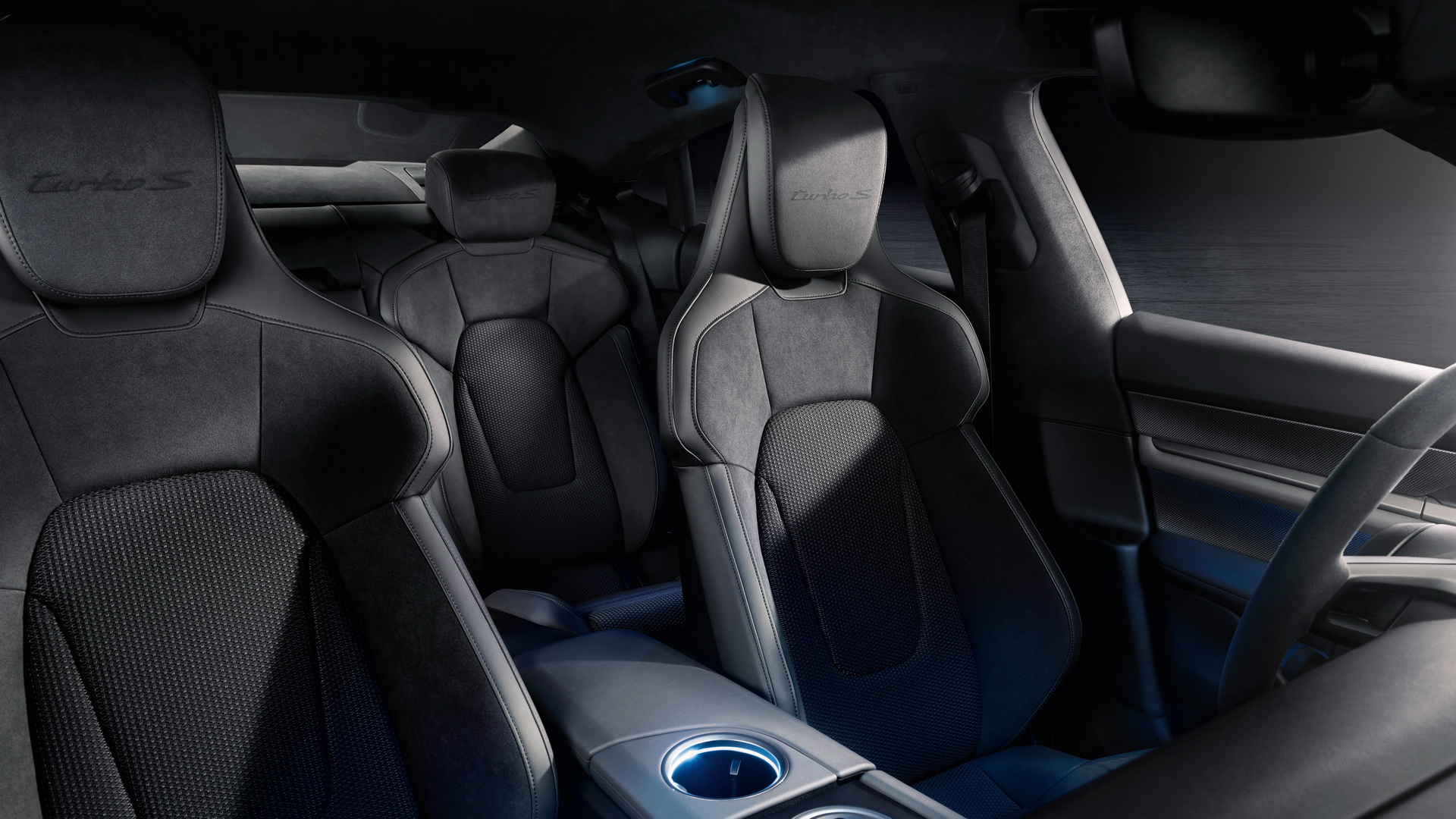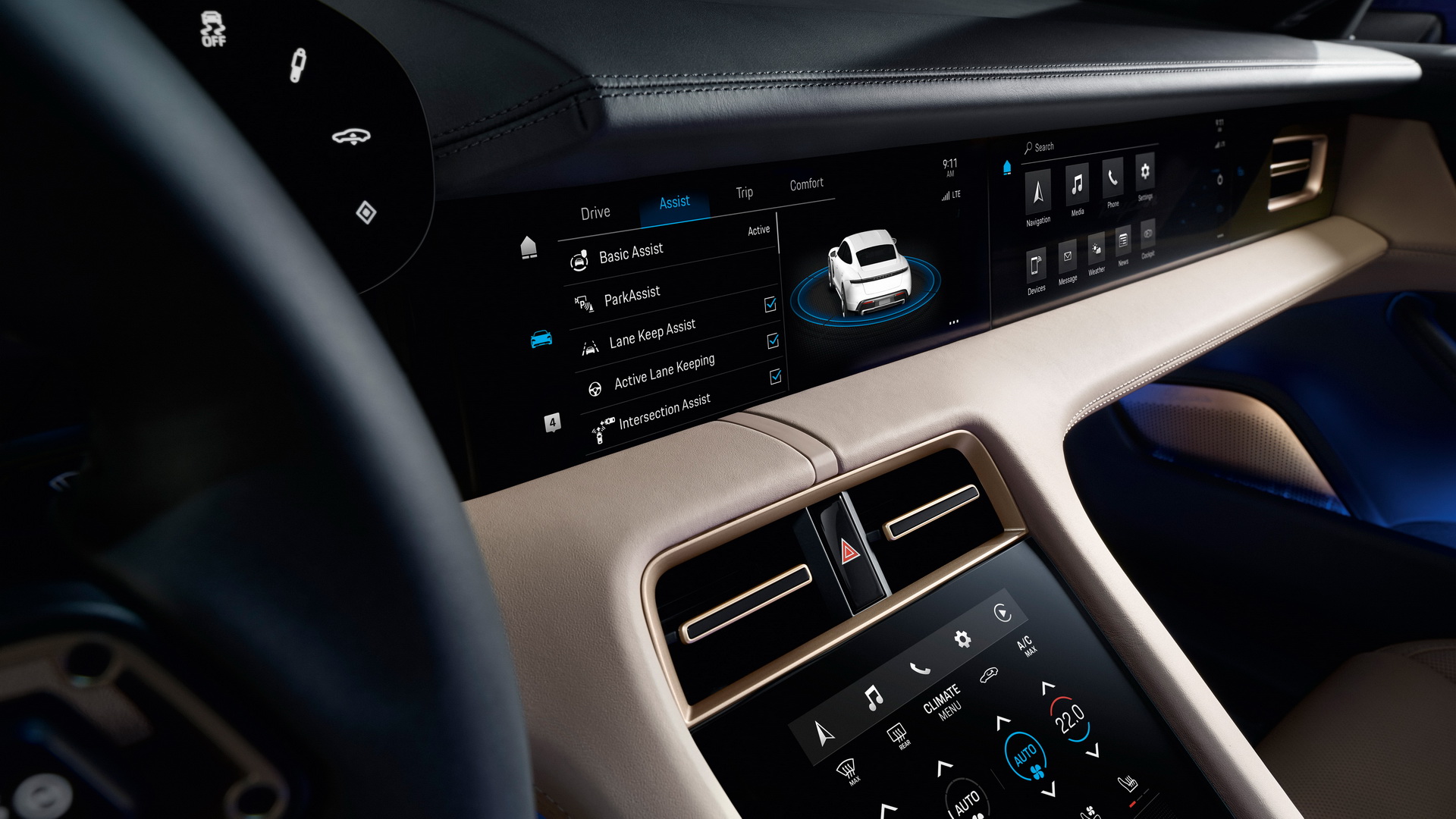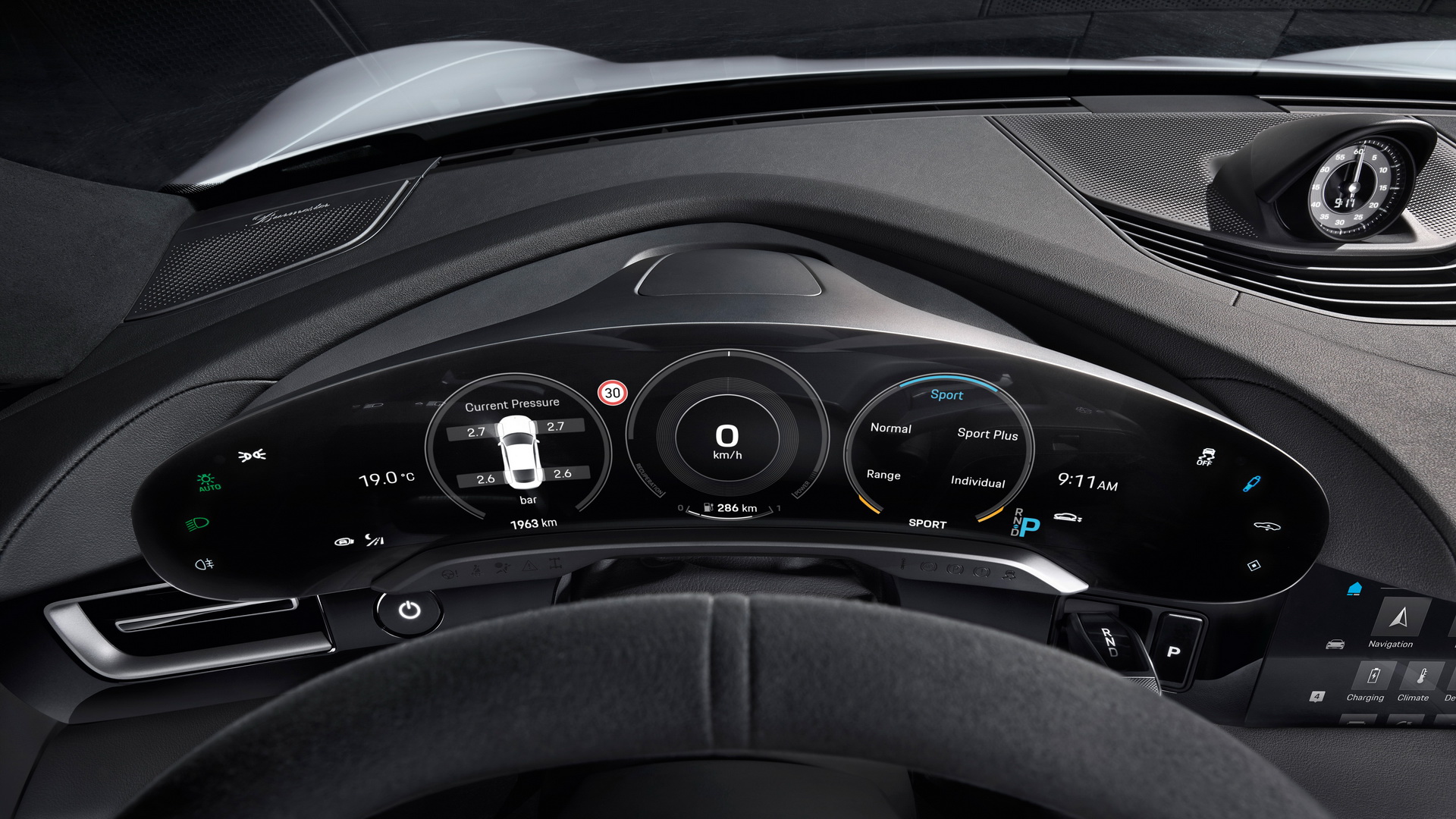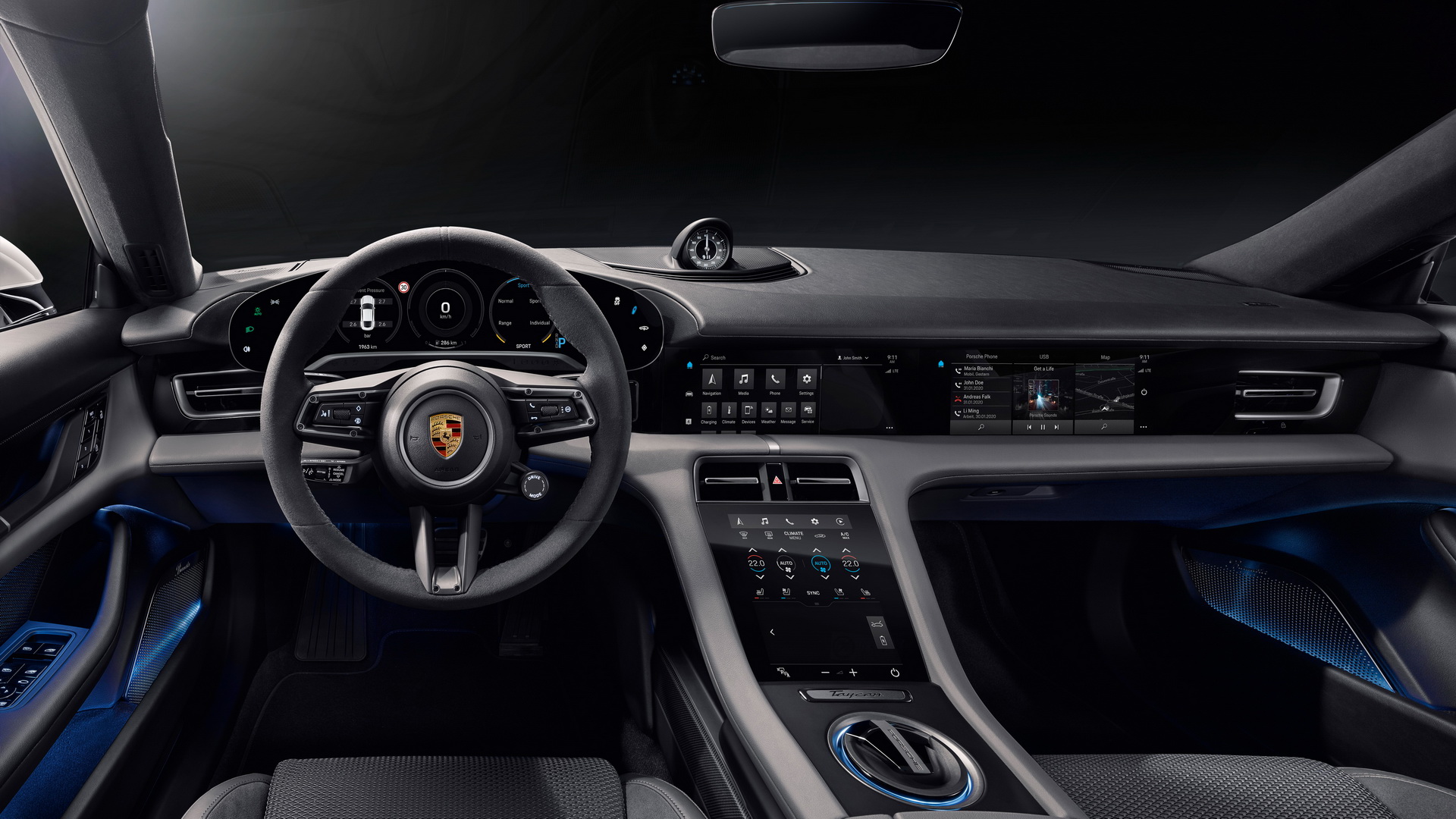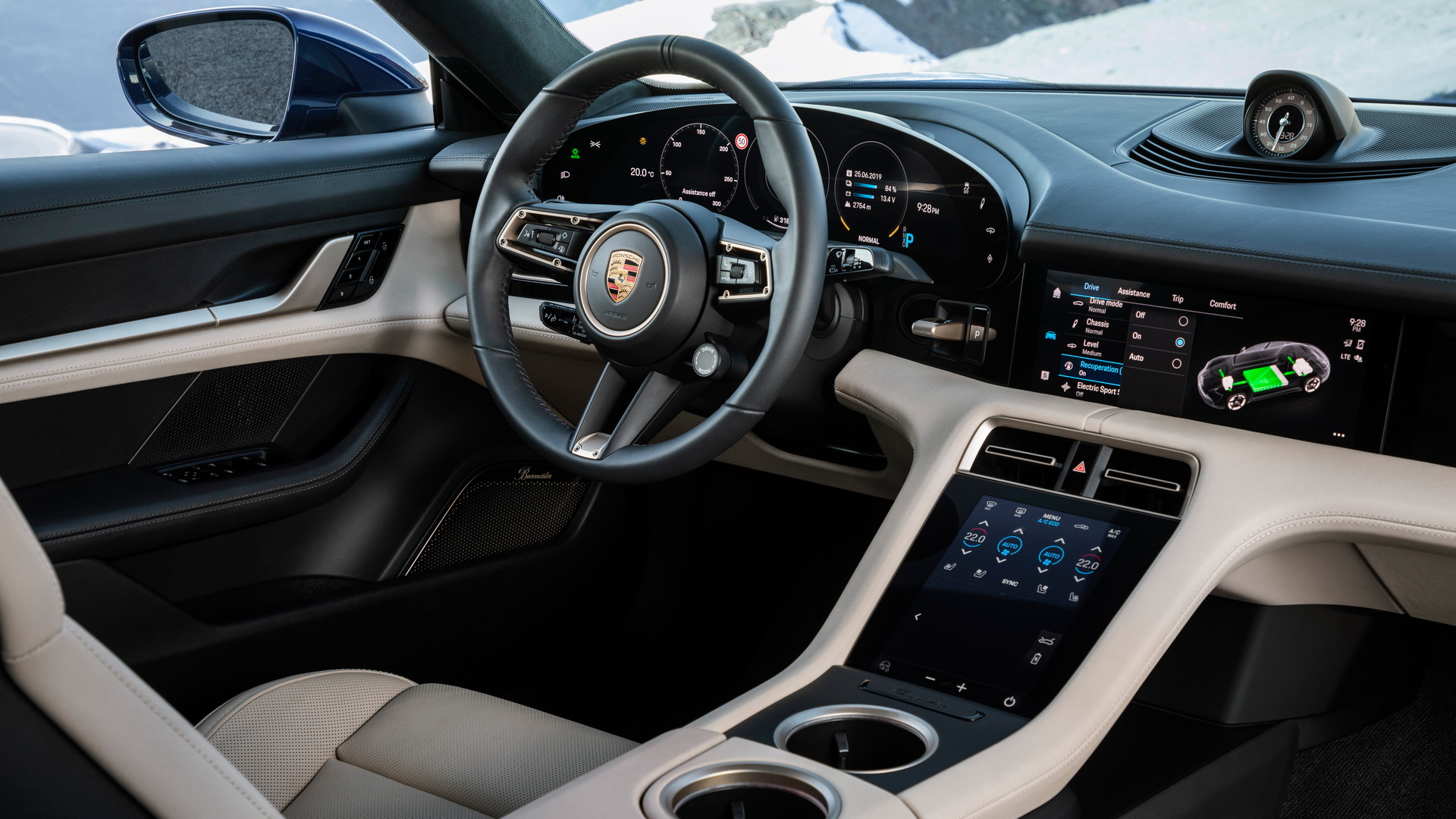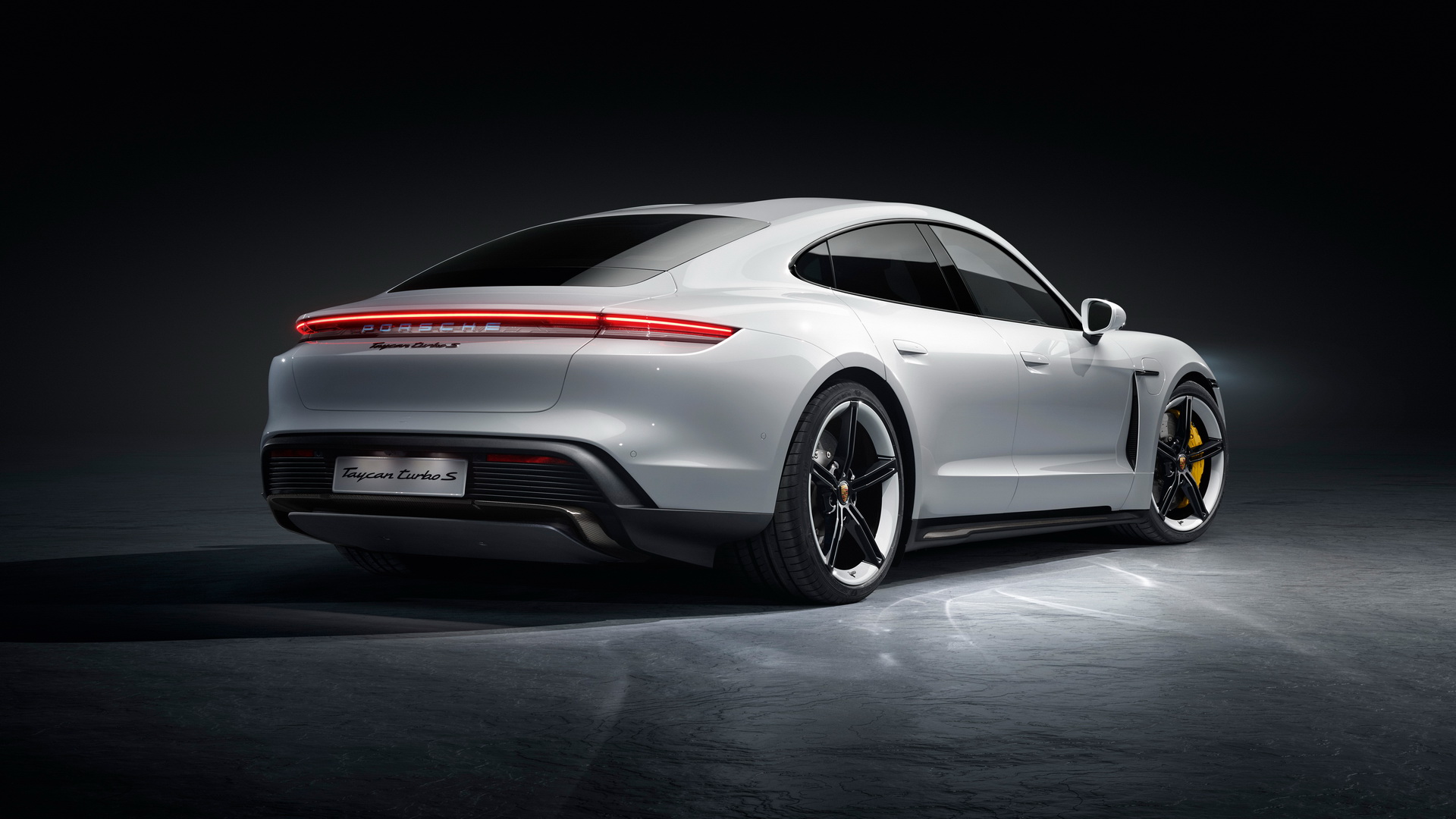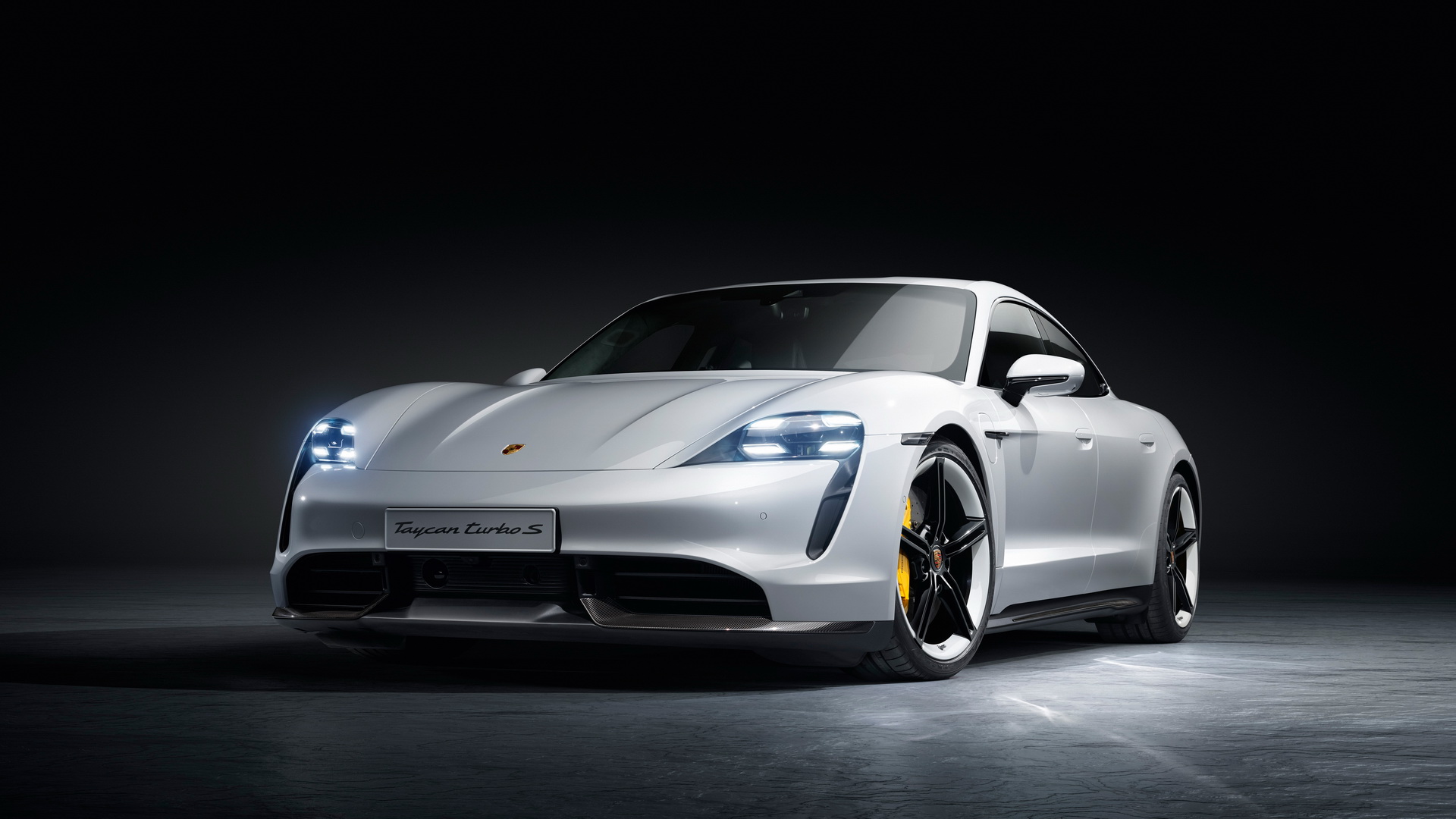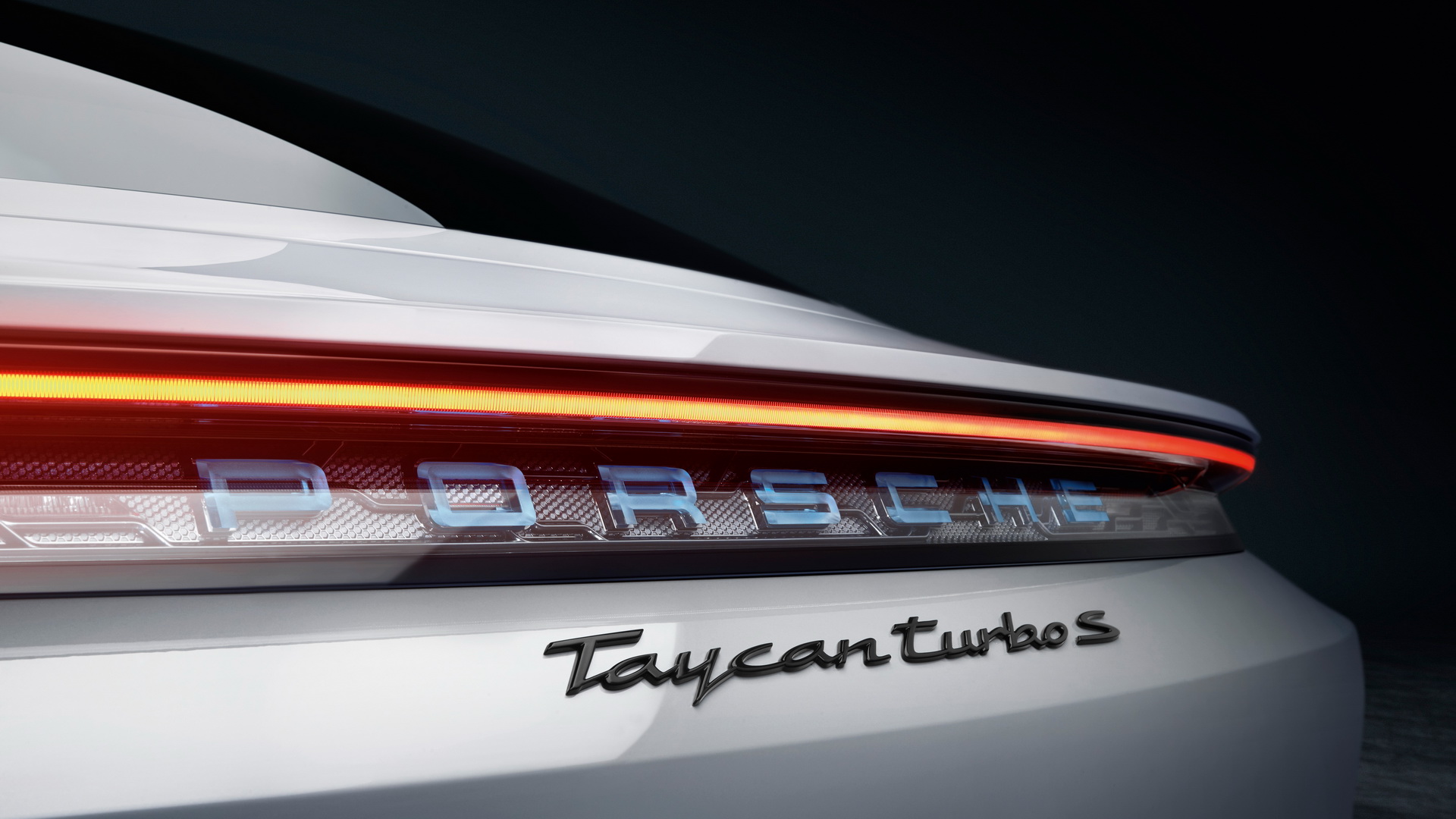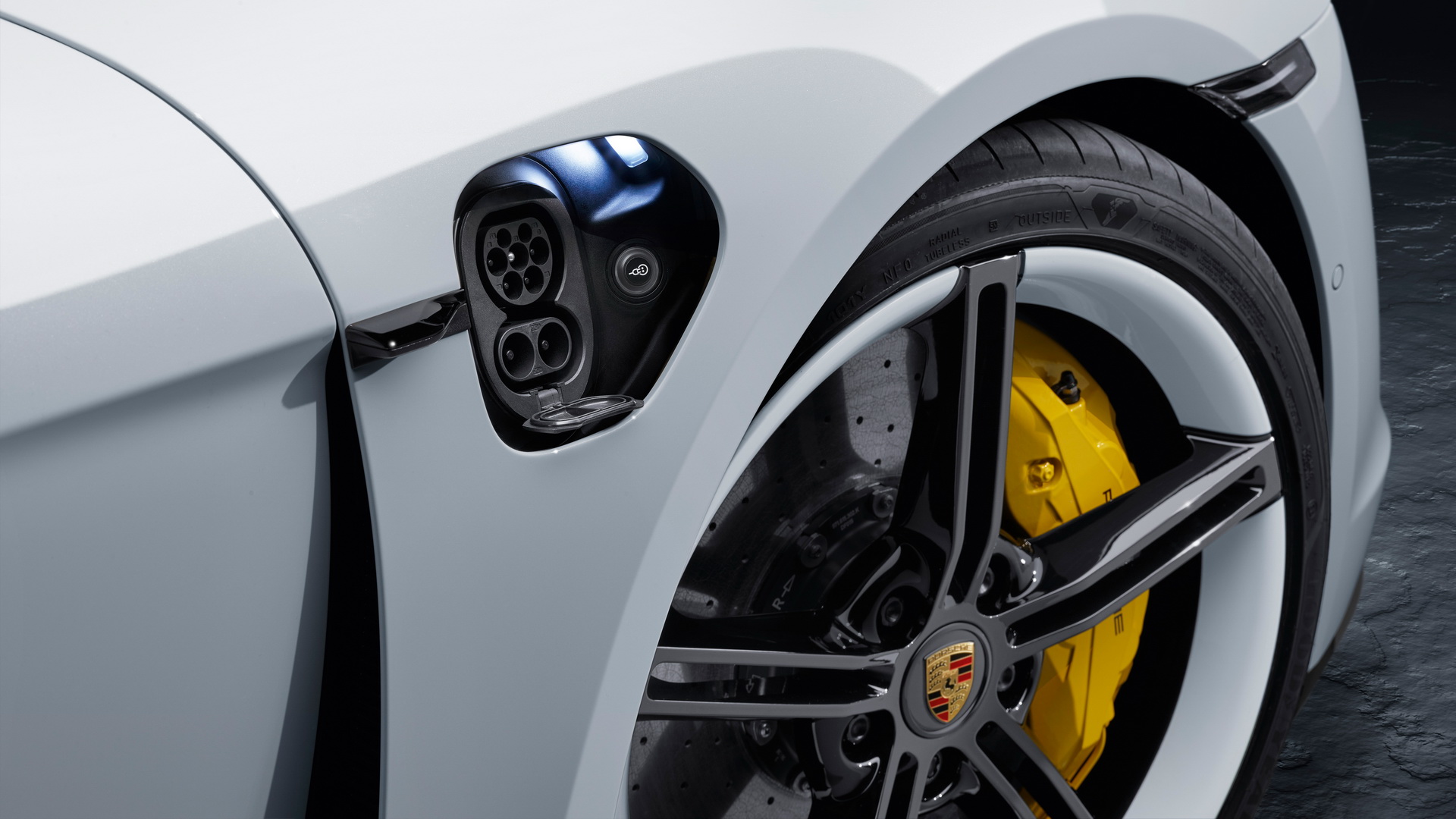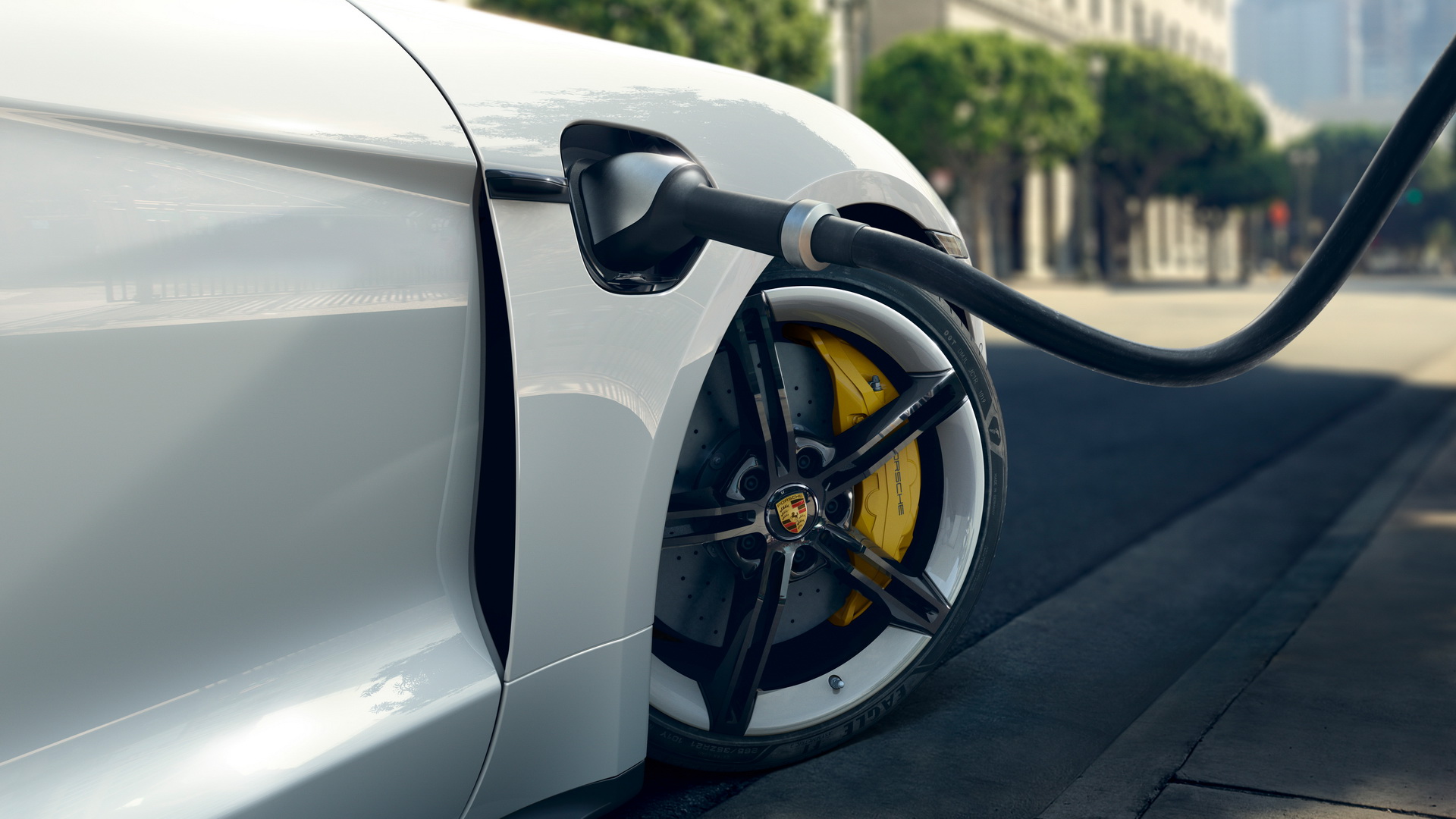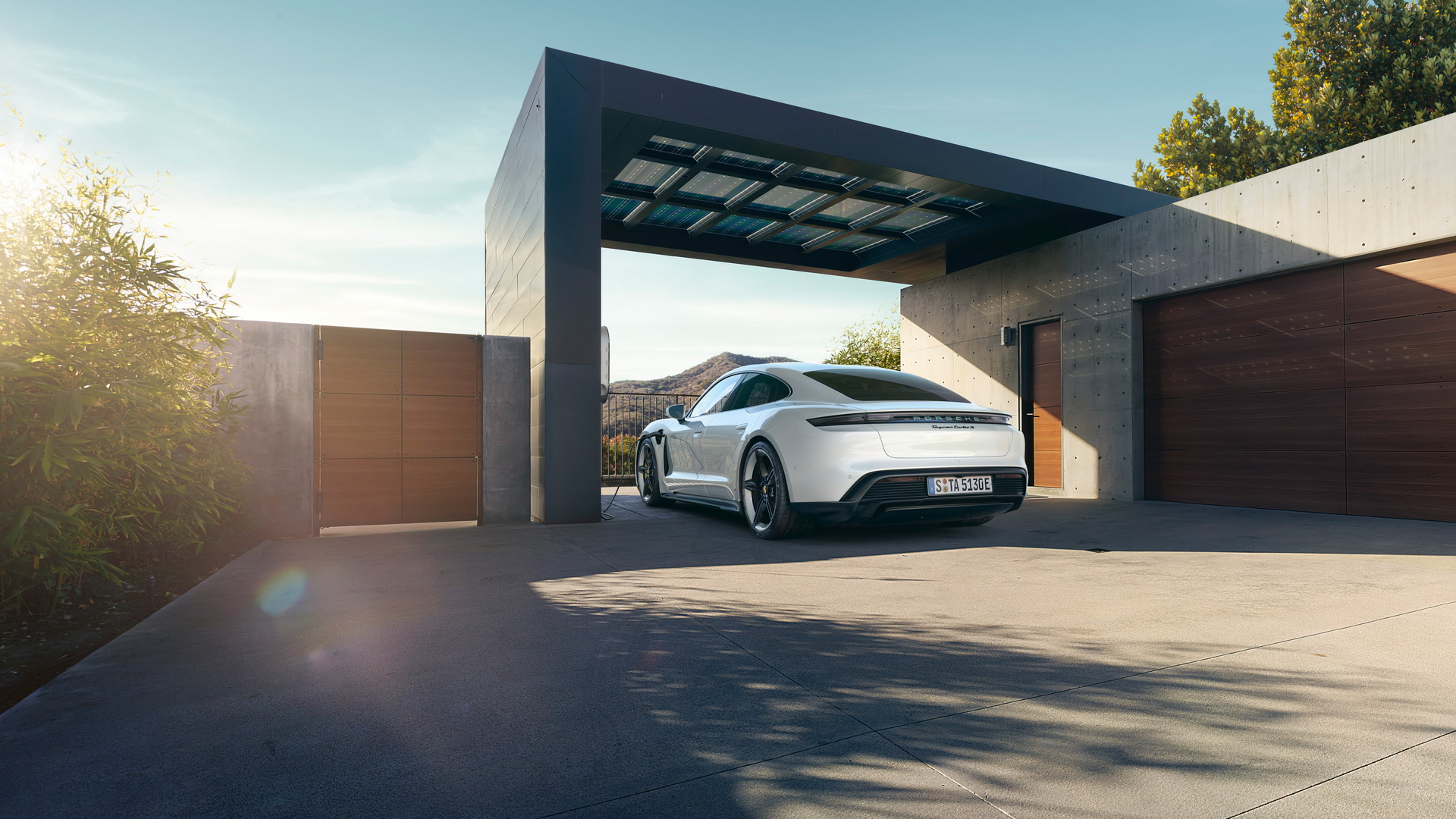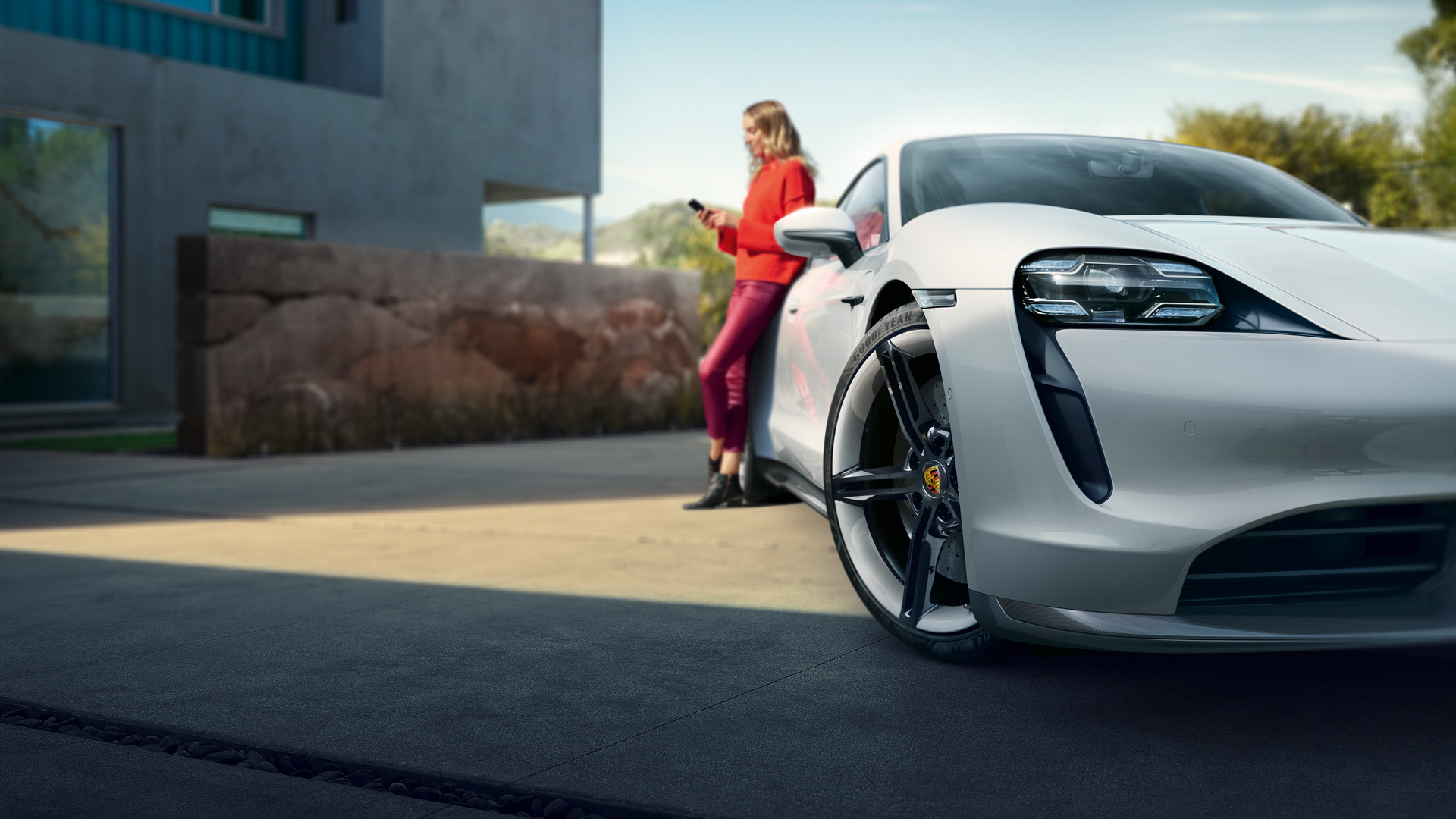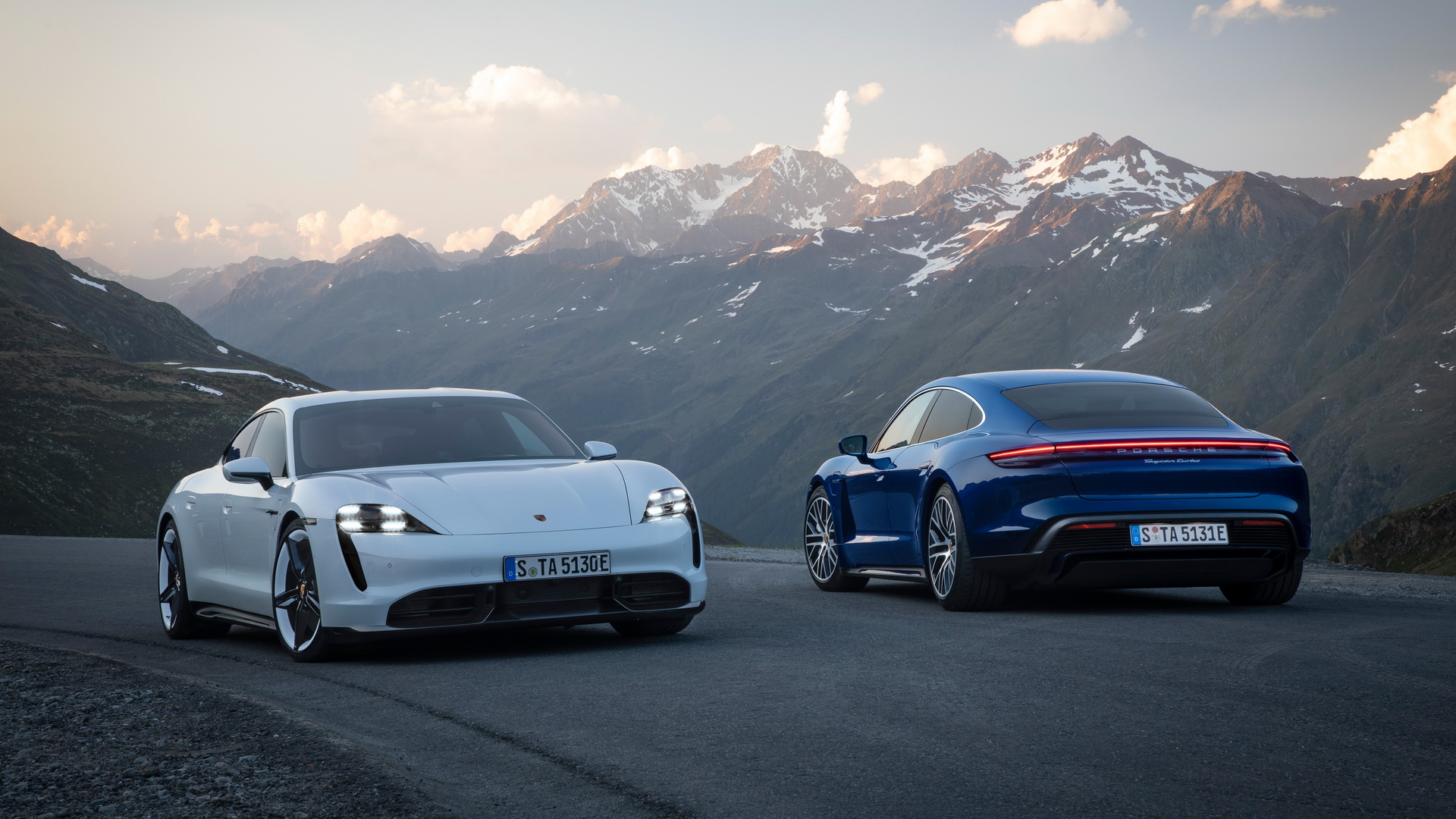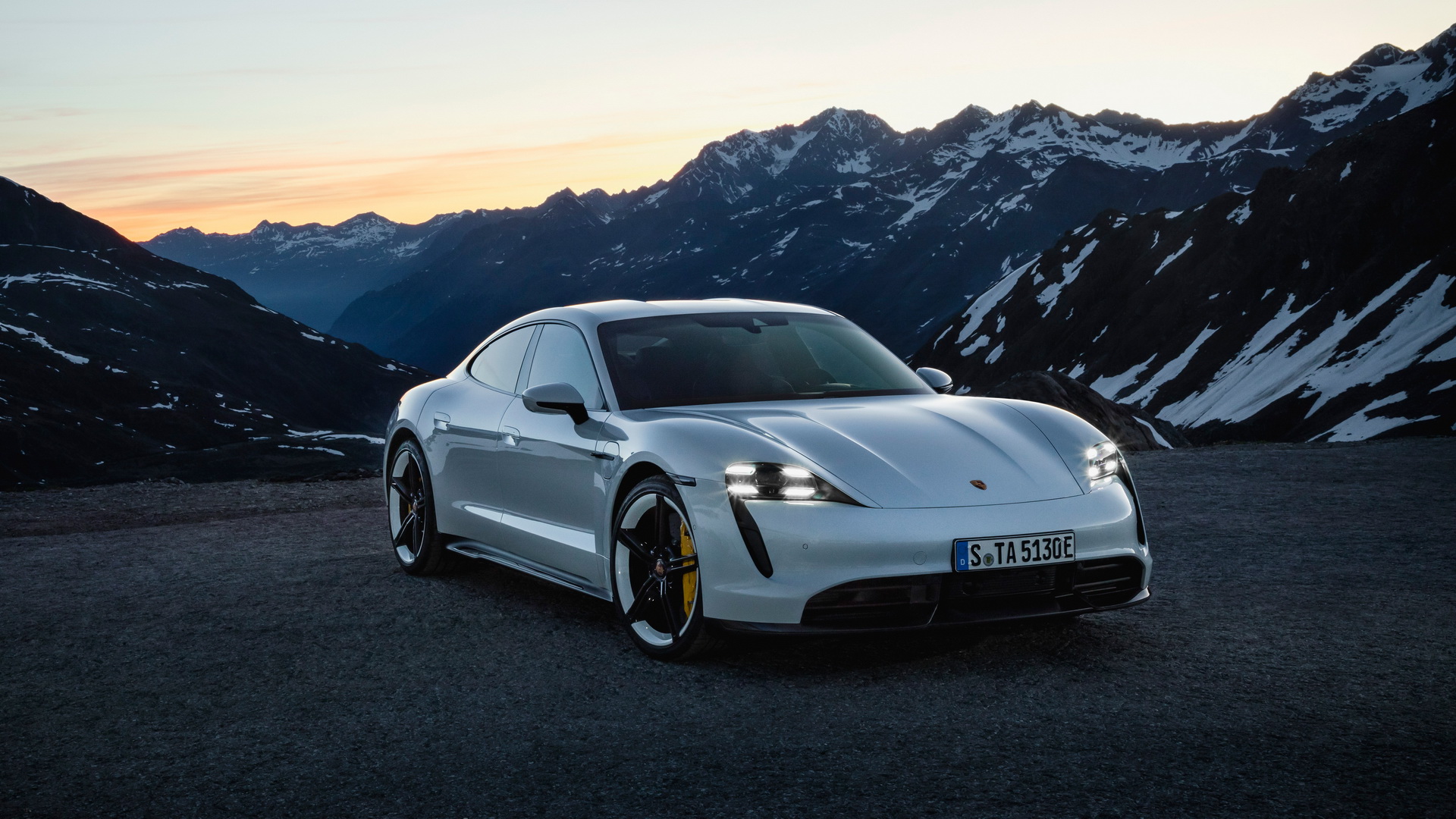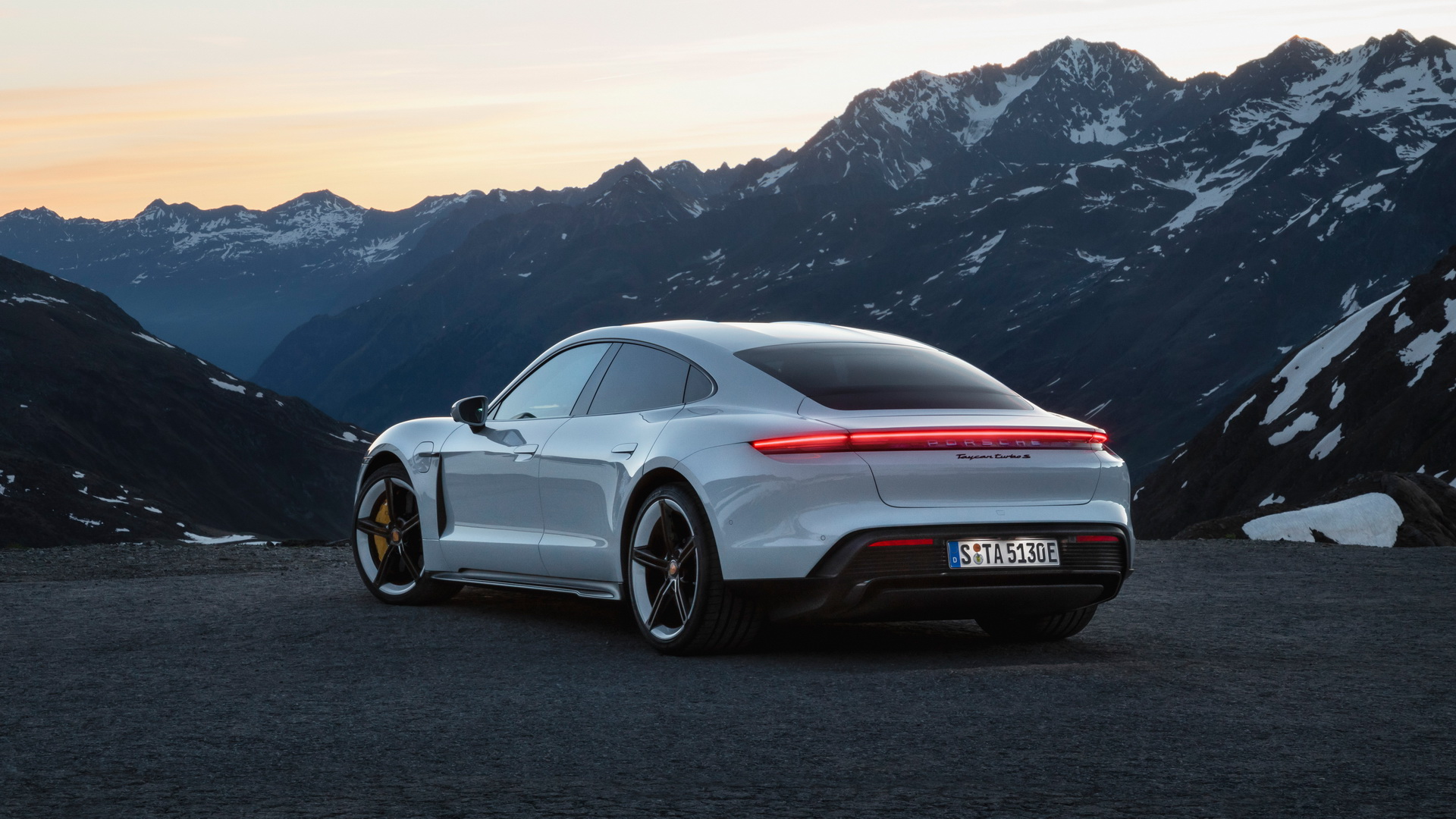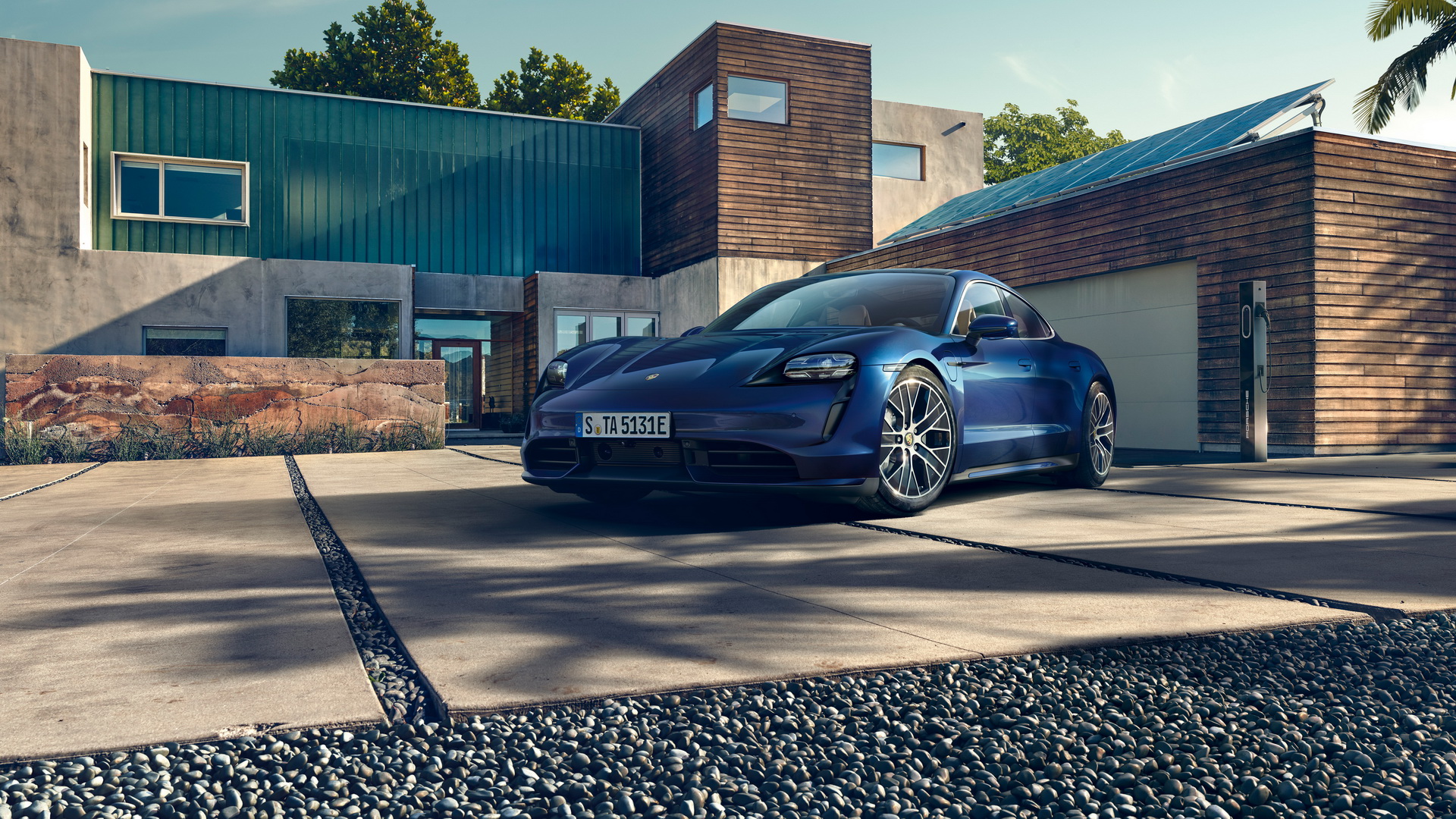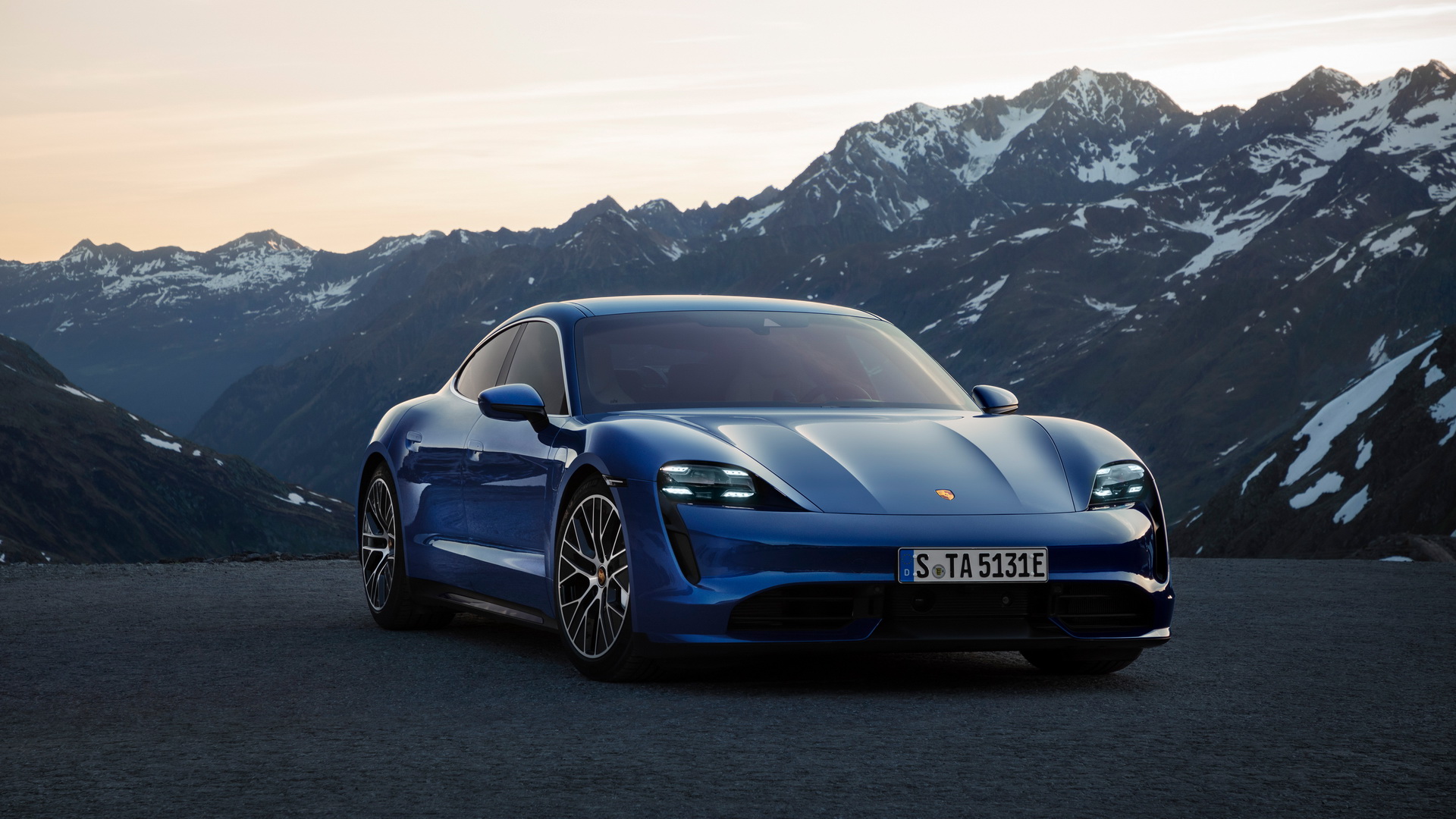Europe’s first answer to the Tesla Model S is finally here and it is the Porsche Taycan, a fully electric four-door sports car with up to 750 HP (761 PS) through overboost, plus a staggering 774 lb-ft (1,050 Nm) of torque.
The first Taycan models you’ll be able to purchase are the Turbo and Turbo S, with less powerful variants to be added later this year. Meanwhile, the first derivative to be added will be the Taycan Cross Turismo, scheduled to arrive at the end of next year.
Plenty of Porsche DNA
There’s no mistaking the Taycan for anything else other than a Porsche thanks to its wide and flat front end, as well as the highly contoured wings. It also features a sporty roofline, sculpted side sections, drawn-in rear C-pillar and pronounced shoulders. We should also mention the glass-look Porsche logo, which has been integrated into the light bar at the rear.
Speaking of design, Porsche managed to give the Taycan a drag value coefficient of just 0.22, which in the end makes a significant contribution to the car’s low energy consumption and long range.
The German automaker used a centrally-networked control system for the Taycan’s chassis, analyzing and synchronizing all chassis systems in real time, systems such as the adaptive air suspension with three-chamber technology including PASM (Porsche Active Suspension Management) electronic damper control, but also the optional Porsche Dynamic Chassis Control Sport (PDCC Sport) electromechanical roll stabilization system with Porsche Torque Vectoring Plus (PTV Plus).
Once on the road, multiple driving modes are available to the driver. There’s Normal, Sport, Sport Plus and Range. Additionally, individual systems can be configured as required by using the Individual mode.
Let’s talk performance
By now, you’re probably curious to know how quick the Taycan really is and how far it can take you before you need to recharge its batteries. Both the Turbo and Turbo S feature 616 HP (625 PS), but that’s where the similarities stop.
The Taycan Turbo can offer its driver up to 671 HP (680 PS) with Overboost, while the Turbo S can muster a peak 750 HP (761 PS). The latter also has more torque with 774 lb-ft (1,050 Nm) versus the Turbo’s 627 lb-ft (850 Nm). This results in the Turbo accelerating to 60 mph (96 km/h) in 3.0 seconds with the aid of Launch Control, while the Turbo S can hit that same mark in just 2.6 seconds. If you’re also interested in 0-124 mph (200 km/h) times, the Taycan Turbo will get there in 10.6 seconds, while the Turbo S in 9.8 seconds. As for top speed, both versions will max out at 161 mph (260 km/h).
By the way, power is sent to the road with the aid of an innovative two-speed transmission installed on the rear axle. First gear is said to be focused on acceleration, while second gear features a long ratio to ensure high efficiency and equally high power reserves.
With regards to range, the Taycan’s 93.4 kWh lithium-ion battery pack with its 800-volt architecture can theoretically receive up to 80% of its charge in as little as 22 and a half minutes, with 60 miles (96 km) of range available in just 5 minutes – as long as you find a 270 kW charger that is.
Also read: Porsche Taycan Quickest EV Of Its Kind On The Nordschleife With 7:42 Lap
Using a 150 kW DC fast charger, you can get to 80% in 36 minutes, while a simple 240-volt outlet at 9.6 kW means having to wait 11 hours.
So what does this mean once you get out on the road? According to Porsche, the Taycan Turbo can cover a maximum of 280 miles / 450 km (WLTP), while the Turbo S can do 256 miles / 412 km.
It’s not difficult to see why the Taycan Turbo S is superior to its non-S sibling. It’s also why the former costs upwards of $187,610, while the Turbo is $153,310, taxes included.
No shortage of on-board tech
The interior of the Taycan is clearly driver focused, where a central 10.9-inch infotainment display and an optional passenger display combine to offer you all the information you need.
As for how you access the car’s functions, that would be either through touch operation of using voice control – the car responds to the command “Hey Porsche”.
What else do I need to know?
Probably the fact that the Taycan measures 4,963 mm (195.4 inches) in length, 1,966 mm (77.4 inches) in width / 2,144 mm (84.4 inches) with mirrors and has a 2,900 mm (114 inch) long wheelbase. By comparison, a Tesla Model S is 4,980 mm (195.9 in) long, 1,964 mm (77.3 inches) wide and its wheelbase stands at 2,960 mm (116.5 inches). So yes, they are fairly similar in size.





